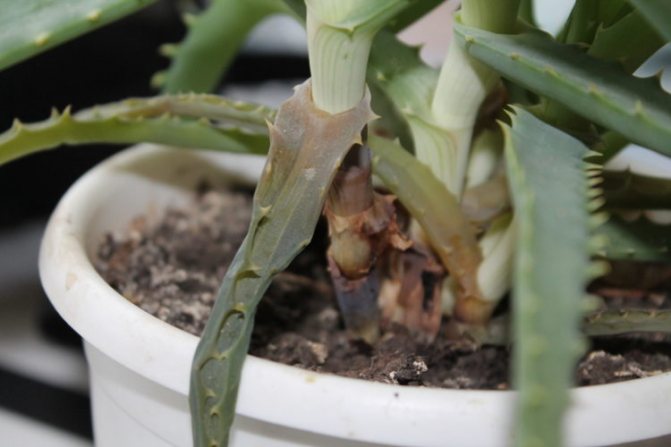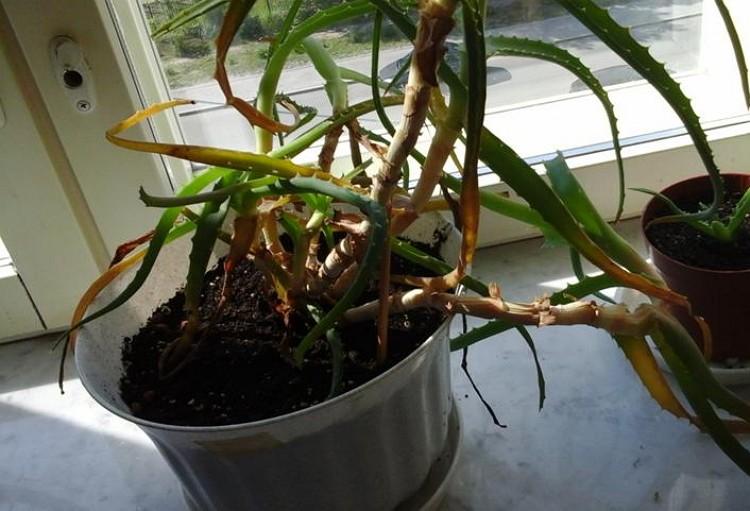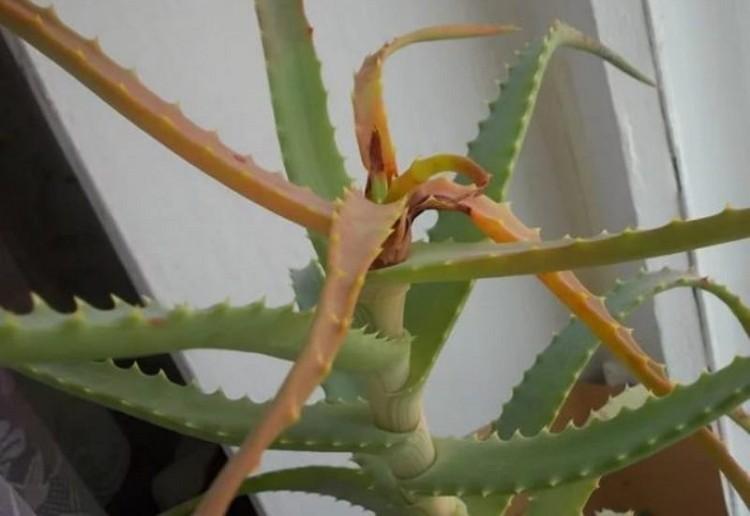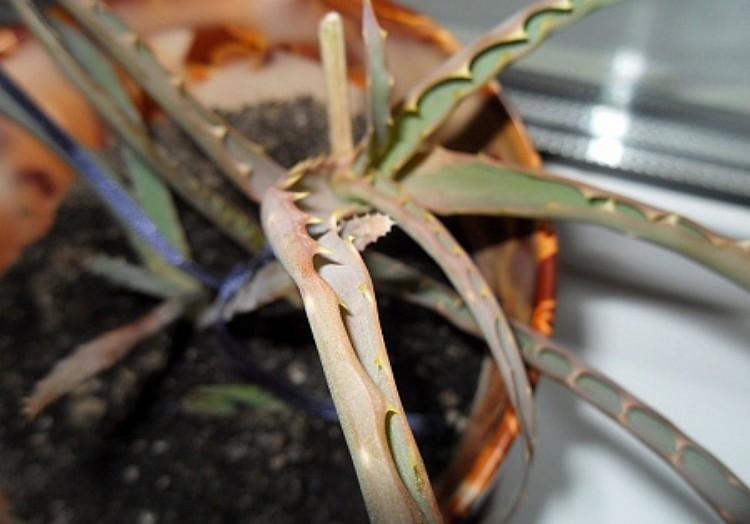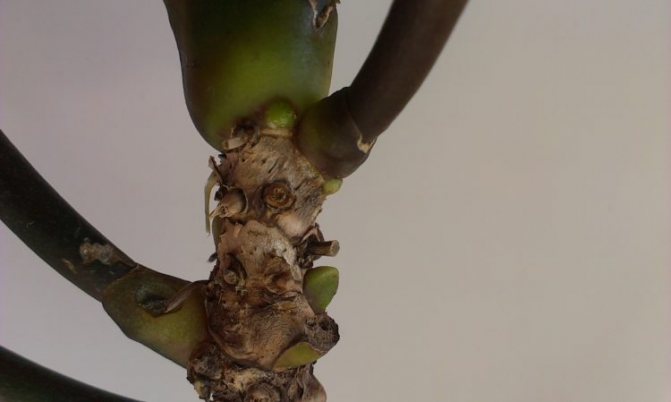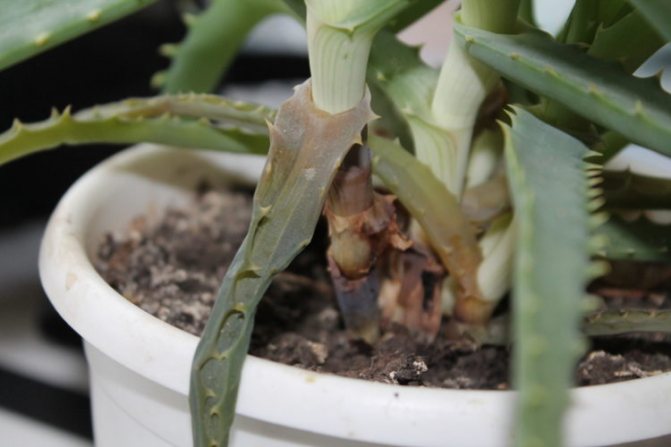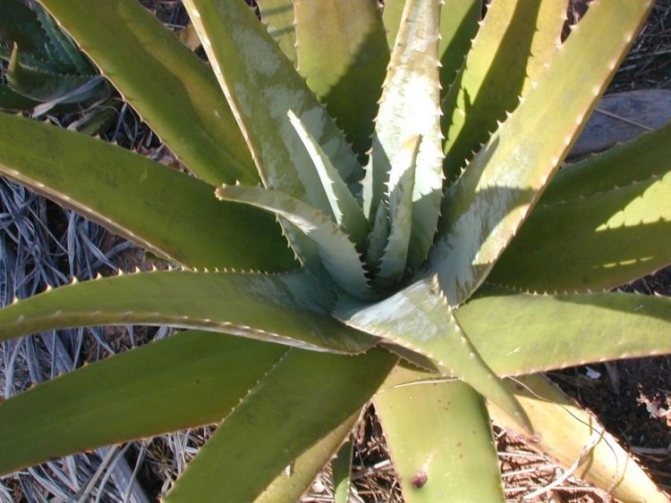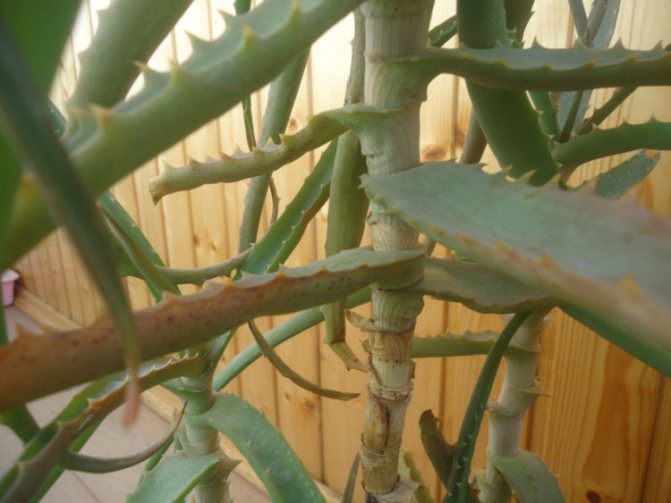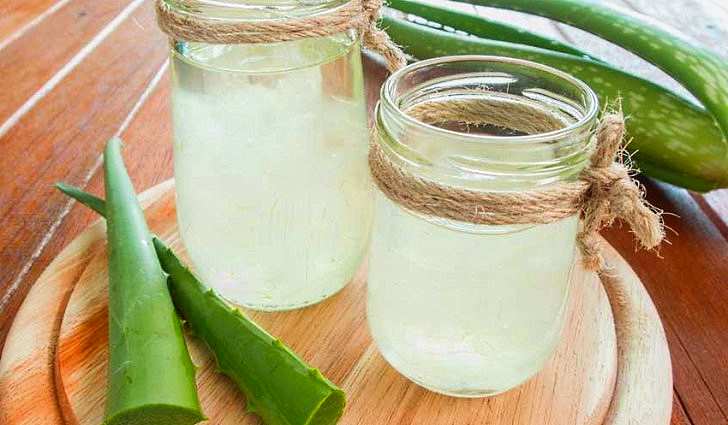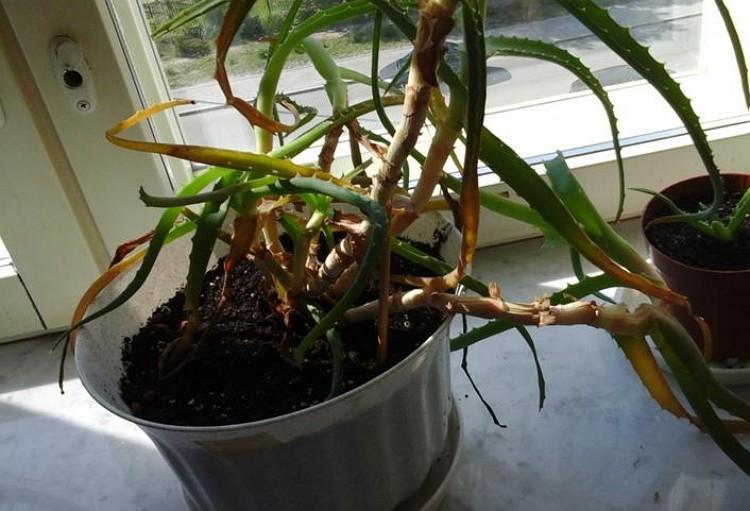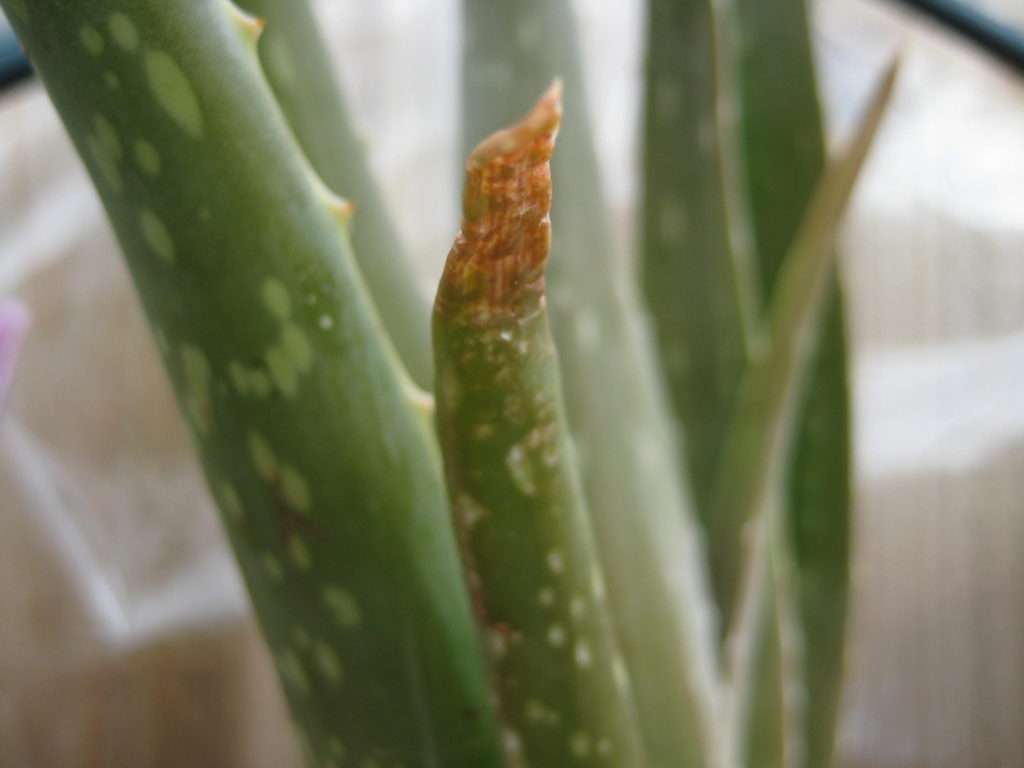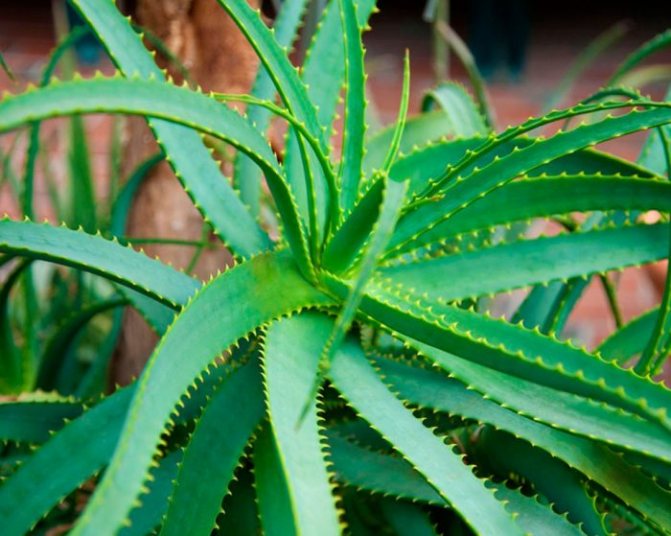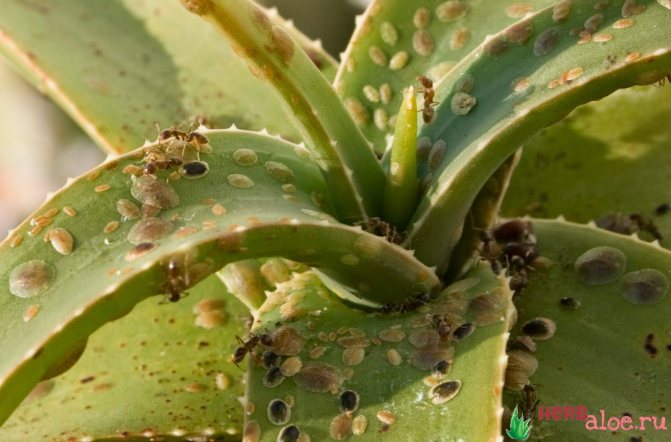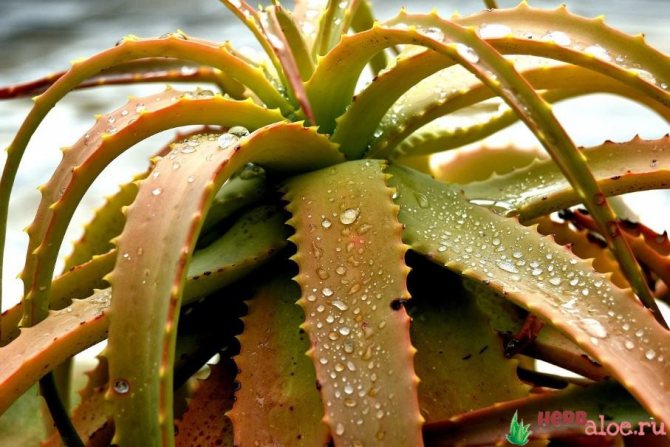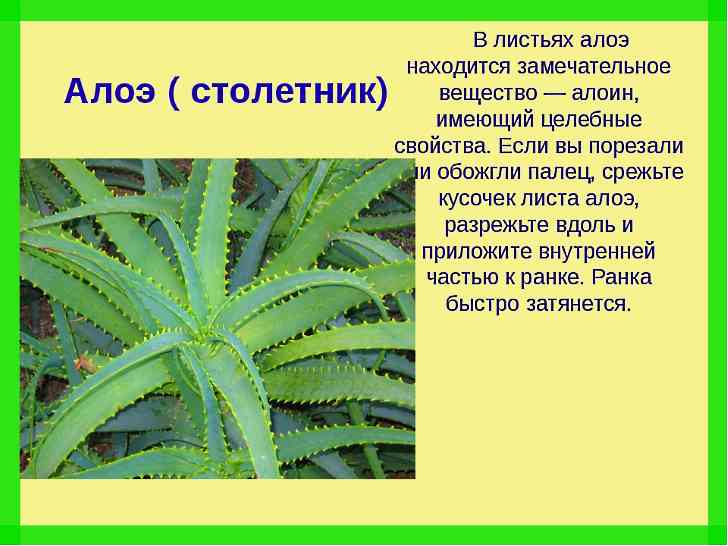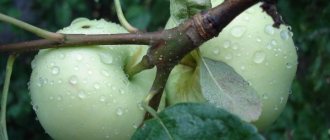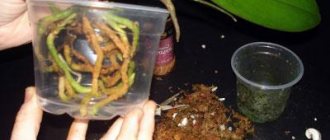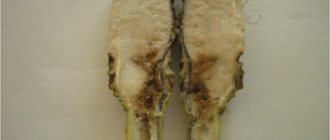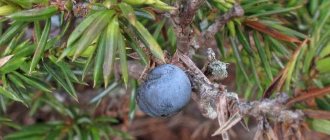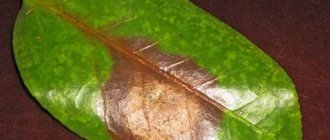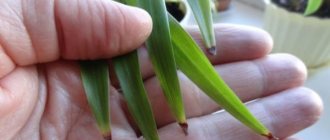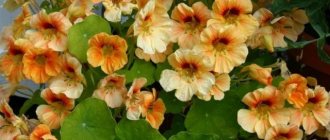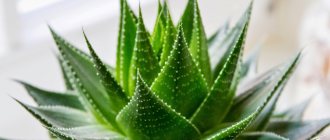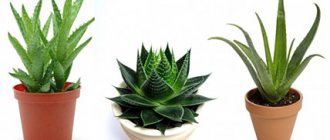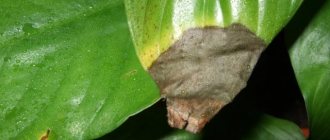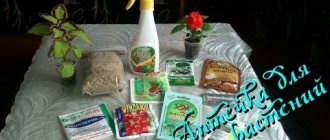A common folk remedy is aloe. Few people at home did not have a pot with this houseplant. Meanwhile, aloe is not only an ornamental houseplant, but a genus of succulent from the asphodelic family. It sounds complicated, but there are no less than five hundred species at all.
As a houseplant, people mainly breed aloe tree or agave or aloe vera. Their height does not exceed 30 cm in height, while their wild relatives can grow in huge bushes. Wild aloe, moreover, pleases with flowering, which cannot please a domesticated flower.
The origin of the genus name is also interesting, in most languages it means "bitter". The medicinal and cosmetic properties of aloe have long been known; it is widely used not only in folk medicine, but also grown in industrial volumes.
It is interesting Variety of aloe species
Pests
Once examining the aloe, you can find uninvited guests on it. In case of damage by pests, the first step is to isolate the plant, as its "neighbors" can become infected.
Aloe pests are different: mealybug, nematodes, thrips. Correct identification of the type of pest will help to successfully combat the disease.
Mealybug
Mealybugs can be seen with the naked eye. These are mobile insects 2-5 millimeters in size, covered with white hairs on top. They leave behind a waxy, cottony discharge.
Signs of defeat
: the plant is covered with pieces of cotton wool, growth slows down.
If there are few insects, then the damaged area should be treated with garlic tincture on alcohol, and then the plant should be hidden from light for several hours.
If the whole plant is infected, you need to use special preparations - insecticides, for example, "Intavir", "Decis", "Fufanon".
Nematodes
These insects come in different types, affecting either the trunk or the leaves.
Root nematodes
more insidious than other pests of aloe, since their presence can only be determined by the roots.
Signs of defeat
: growth slows down; after examination, nematodes in the form of small grains are found on the roots.
Treatment is difficult. The damaged roots are removed and the plant is re-rooted. Then they are treated with Vidat and Tecta preparations.
Thrips
Thrips are small winged pests 1-2 mm in size. At elevated temperatures and high humidity, they spread quickly.
Signs of defeat
: growth slows down, silvery streaks appear, which leave behind thrips.
Treatment is carried out by spraying with Intavir, Fitoverm, Decis. However, the control of these pests is complicated by the fact that they have developed immunity to essential drugs. It is recommended to add the "Confidor" soil spill.
Spider mite
A spider mite is not so easy to see on an aloe, because its size does not exceed one millimeter.
Signs of defeat:
spider web on the leaves, discoloration of the stem. The stem turns yellow at the initial stage, and red at the later stage.
Against such a pest, all the previous means of control are not valid, because it belongs to the arachnids. It is necessary to use special preparations - acaricides. Together with this, you can additionally spray the plant with garlic tincture. This will enhance the healing effect.
Pest control and prevention
One week after the first treatment, a second one is carried out. In a week, new larvae will hatch from the eggs and they need to be destroyed. The place where the flower pot stood is well cleaned.
Prevention consists of regular inspections of the plant and keeping the plants clean. You need to closely monitor factors such as:
- sufficient lighting (in winter - supplementing with artificial light);
- warm temperature (in winter - not lower than 12 degrees Celsius);
- special soil composition;
- moderate watering;
- regular feeding in the spring and summer periods;
- watering only with settled water at room temperature;
- aloe transplant every three years;
- transplanting into a convenient pot, taking into account the growth of the root system;
- avoiding drafts and accidental hypothermia;
- inflow of fresh air in hot summer conditions.
Subject to all the basic aloe will grow healthy and strong and give its healing properties. At the same time, the immunity of aloe, under good conditions, will be able to cope with diseases and pests at the initial stages.
Prevention of aloe vera diseases should be carried out regularly, then the risk of damage will be less.
The earlier the ailment is discovered and the fight against it begins, the more effective the measures taken to save the aloe will be.
Pharmacological properties and use of aloe tree
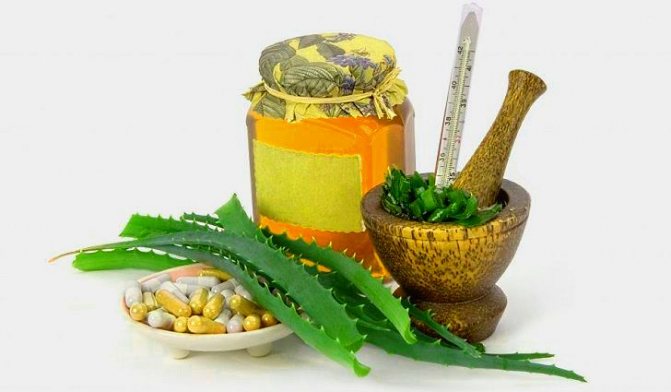
Aloe preparations have a laxative, adaptogenic, hematopoietic, bactericidal, anti-inflammatory, antiviral, immunomodulatory, tonic effect, affect the regulation of digestion, stimulate tissue regeneration.
In small doses, aloe improves digestion, has a choleretic effect and stimulates appetite (bitterness). Due to the ability to alkalize the internal environment of the body, it prevents acidosis, which can lead to digestive disorders. In addition, aloe has a beneficial effect on general exhaustion, weakness; it is prescribed to increase resistance to infections, heal wounds, ulcers, burns of the skin and mucous membranes (bactericidal effect), including after radiation therapy in combination with castor and eucalyptus oils.
Aloe preparations are used for gastric ulcer and duodenal ulcer, gastritis, gastroenteritis, enterocolitis, constipation; in the treatment of a number of eye diseases, including for the purpose of non-specific therapy in the complex treatment of progressive myopia and myopic choreoretinitis, opacity of the vitreous humor, inflammatory diseases; for diseases of the upper respiratory tract, sometimes used for bronchial asthma; in chronic inflammatory diseases of the female genital organs, in the complex therapy of prostatitis.
Aloe syrup with iron is used for hypochromic anemia, diseases of the gastrointestinal tract, intoxication, exhaustion.
Aloe extract liquid for injection is prescribed for the treatment of eye diseases (blepharitis, conjunctivitis, keratitis, iritis), chronic gastritis, gastric ulcer and duodenal ulcer, bronchial asthma, gynecological diseases.
With the advent of modern technologies and taking into account the experience of ancient formulations of aloe, they began to be actively used again in medicine, cosmetics and the food industry. It is used to prepare regenerating and rejuvenating creams and balms, stimulating juices, drinks and yoghurts, medicines and injections.
Aloe stimulates the synthesis of elastin and collagen in the body, accelerates cell regeneration, compensates for age-related changes, slows down skin aging, and smoothes wrinkles.In this regard, it is used externally for dry and cracked skin, burns (traumatic, electrical, solar, frictional), dermatitis, insect bites, allergic reactions, skin rashes, acne, rashes and irritations, ulcers, eczema, some types of herpes, urticaria and psoriasis, fungal diseases, seborrhea, conjunctivitis, etc.
In folk medicine, fortifying mixtures of aloe juice with honey, nuts, cahors, lemon juice and other ingredients are popular. They are usually prescribed after serious illnesses, with tuberculosis and sexual weakness, for the rehabilitation of a patient who has suffered a myocardial infarction.
Despite the high healing qualities, the internal intake of aloe vera preparations also has significant limitations.
Photo
See more photos of aloe diseases:
Withers
It happens that a succulent withers for no apparent reason.
... In this case, you should do the following:
- Stop over-watering.
- Do not let the earthen person dry out too much.
- Provide enough light.
If this does not help, then the reason lies elsewhere. Perhaps the aloe is withering due to decay of the roots
... In this case, it will have to be transplanted.
Dries up
The main reason aloe leaves dry is due to improper care. It can also happen if the plant is struck by some kind of disease or pest. In this case, the main thing is to notice the ailment in time and provide proper assistance. How to properly care for aloe so that its leaves do not dry out?
- There should be enough sunlight.
- There must be nutrients in the soil.
- It is worth observing the temperature regime.
- Frequent watering is not encouraged; it is optimal to water the plant twice a month.
You will find detailed information on why aloe can dry and what to do about it, and read about the reasons why aloe begins to turn yellow.
Leaves fall
Falling leaves indicates that the care of aloe has changed or the conditions of detention have changed. Often the leaves fall off due to the fact that watering is done with cold water.
.
You can save as follows:
- Stop watering the plant with cold water.
- The water must be settled.
- Let the flower rest from the liquid for a while.
Read about what problems with leaves aloe can have and how to deal with them.
Causes of the disease
Recall that aloe belongs to succulents. In its natural environment, the agave grows in an arid, hot climate on sandy, well-ventilated, light soils. Violation of agricultural practices when growing succulents leads to big problems.
Frequent watering
With constant moistening of the earthen coma, soil spreading occurs. If the soil is heavy, clayey, a dense crust forms on the surface after drying. Since the plant breathes not only with its ground, but also with its underground part, carbon dioxide is constantly released into the soil. Souring of the earth during waterlogging is a frequent consequence of this. Many nutrients pass into forms that are not assimilated by the plant.
Strong dampness and increased acidity of the soil lead to the onset of the development of root disease.
Cramped pot
The roots of an adult plant in a cramped pot are woven into a tight ring.
With excessive waterlogging, the dampness inside the coma is constant, and there is almost no oxygen. At the same time, the ground may look dry from above. This difference leads to the fact that the plant experiences additional stress and begins to rot inside.
Hypothermia
If hypothermia is added to excess moisture, the situation is aggravated. According to statistics, the roots of succulents often rot in the autumn and winter, when it blows strongly from the side of the windows, and the soil in the pots is cooled. But even in the warm season, watering with cold water harms the plant.
Infection with pathogens
Sometimes, even with moderate watering, a disease can develop due to a fungal infection. This happens if the aloe is planted in a container in which a diseased plant lived before it.Some bacteria can live for years on the walls of an old pot, and as soon as a favorable situation arises for them, they can easily master the new space.
Top dressing with organic fertilizers
Often, flower growers, trying to revive a diseased plant with fertilizing, aggravate the situation, causing a surge in the development of bacteria that provoke rot. Manure or bird droppings are especially harmful to aloe.
The plant died or rotted: reasons and what to do
Why could the flower die? This could have happened as a result of a serious illness that was neglected or improper care. It is very important to notice and diagnose the disease in time so that later you know how to deal with it. Timely detection of the disease is the key to successful plant rescue
.
Important
: If the root system of aloe has completely rotted, and with it the stems, then such a plant cannot be saved, all that remains is to throw it out.
The only way to reanimate is to try to transplant the cut stem into a clean container with new soil. You will need soil for cacti, mixed with river sand and rotted earth. Also, the succulent needs good drainage.
.
Dangerous diseases of aloe
The most dangerous disease of aloe is dry rot... The development of the disease takes place very quickly, it is very difficult to prevent or save the plant even partially. It is impossible to recognize the disease - there are no external changes, the root simply dries out and, as a result, dies.
Aloe affected by dry rot
Only constant preventive measures can save the plant from drying out. Proper care and regular spraying will help preserve the agave. It is necessary not to allow the aloe to freeze, maintain an even illumination. The soil in the pot must contain minerals, the plant must have access to the sun. A plant is capable of independently resisting pests and diseases if properly cared for.
The next nuisance worth noting is root rot... It occurs with excessive watering of the soil, the roots simply begin to rot. It is not recommended to water aloe more than twice a month, and sometimes it is even necessary to wait for the soil to completely dry out.
It is possible to save a plant if it is affected by root rot only with early detection of the disease. Rot manifests itself clearly: growth retardation occurs with regular watering, the stem begins to rot from below, it is not uncommon for aloe to dry out the tips of the leaves.
The disease can be cured only if the root system is partially affected. The aloe must be dug up, shaken off the ground and the decayed root removed. The entire root system must be sprinkled with coal powder or ash, or these additives must be mixed into the soil with sand. This measure will not allow healthy roots to rot. It is recommended to choose a new pot for transplanting. Watering can be done no earlier than a month after the performed actions.
In the event that the roots have rotted completely and the disease has begun to devour the stem, it is no longer possible to save the plant. Perhaps if you cut the stem and transplant it into a clean pot with new soil, the plant will survive. To prepare soil for aloe, use rotted soil mixed with river sand 2: 1 or ready-made soil mixture for cacti. Good drainage is essential.
Remember
The fungus remains on the walls of the container for many years, therefore, even if the plant was saved, the pot must be thrown away.
Aloe vera diseases due to improper care
Due to improper care, most often aloe dries and turns yellow. The leaves of the plant also curl and turn red. There is no universal solution to the problem, and therefore experts consider each case separately. So, what if the aloe leaves curl and turn yellow, the plant itself dries up or rots? Photo consultation from professional florists.
Why does aloe have thin leaves, but the plant itself stretches?
In this case, the plant lacks sunlight. From a lack of lighting, aloe begins to grow intensively upward, as if making its way to the rays of the sun, while spending a tremendous amount of energy on growth. At the same time, the plant does not have enough nutrients to build up a full-fledged green mass, and therefore the aloe leaves become thin. You can solve the problem by rearranging the flower closer to the window or placing it under artificial lighting (in winter). If there is no artificial lighting, then it is recommended to lower the temperature of the aloe content and reduce the number of waterings. Thus, the plant slows down all physiological processes and it will not stretch. With the onset of spring, aloe provide the right level of illumination. These should be windows on the east or west side of the house. If the windows of the house face south, then the plant must be shaded. It is also recommended to take the plant outdoors in spring and summer, but always with shading.
In aloe, the lower leaves were spotted at the base and fell off.
... Reason: regular waterlogging of the soil, as a result, the root of aloe rotted, rot began to rise up the stem of the plant. What to do? The plant must be removed from the pot, remove all the rotten part to a clean cloth. A neat cut is made on the stem until the tissues at the cut site are completely clean. Next, the place of the cut is sprinkled with crushed, activated carbon, the cut is allowed to dry in 1-2 hours, then the base of the plant is powdered with root, and the aloe itself is planted in a small pot (volume 100-200 ml). The soil should have the following composition: 1: 1 peat and sand (sand can be replaced with perlite). Watering is very scanty, it is watered through a pallet, only the lower part of the pot where the aloe was planted is moistened. Only the bottom layer of soil in the pot should be wetted, followed by complete drying of the soil and again poor watering. Do this until roots are formed.
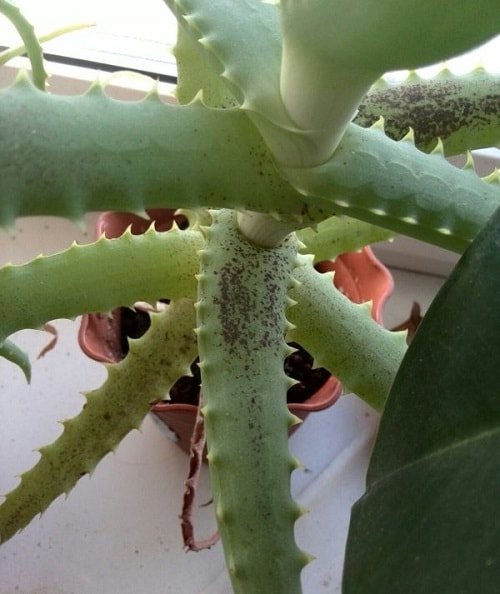

Why do aloe leaves turn red
? Red or brown spots on the leaves of aloe are a protective reaction of plant tissues to bright, sunlight, that is, it is a sunburn. Red spots on aloe leaves can appear in the spring, when light levels increase after short winter days. The plant has lost the habit of the sun during the winter and throws out the red pigment on the leaves for protection. Often, red spots on the leaves of aloe appear if the plant is moved from partial shade to the windowsill under the unshaded sun. The plant must be taught to bright light gradually. From an overabundance of sunlight, the leaves of aloe will not only turn red, but also wither or turn yellow at the tips.
Why do the lower leaves of aloe turn yellow?
Massive yellowing of the lower leaves in aloe indicates errors in grooming. So, a warm wintering in conditions of abundant watering and a lack of light leads to the depletion of the flower. As a result, the lower leaves of aloe turn yellow, when, like the crown, it is strongly stretched, and the leaves become thin and not so fleshy. What to do? If in winter the plant is not able to organize artificial lighting for 12 hours, then the temperature of its content is reduced, up to +10 degrees (it is necessary to gradually accustom the plant to a low temperature). At the same time, watering is reduced and aloe hibernates in almost dry soil.
Why does aloe turn yellow in summer?
In summer, even in conditions of sufficient light, the lower leaves of aloe often turn yellow. This indicates a violation of the root system, that is, the roots can rot from excessive waterlogging. Either the plant is watered too often, or it grows in a very large pot. If the aloe is elongated and its lower leaves turn yellow, you can re-root the top. Thus, the plant is rejuvenated. The top is cut off, the cut is sprinkled with crushed coal, dried in the shade for 1-2 days, then the cut is sprinkled with root and planted in a small pot. A 1: 1 mixture of peat and sand is suitable here. Watering is very sparse through the pallet. Only the bottom layer of soil should be wetted.The next watering is only after the soil has completely dried out from the previous watering.
Why do aloe leaves turn yellow?
Aloe leaves turn yellow if a cold winter is arranged for the plant, while watering is not reduced. Or they sharply reduced the temperature of the plant. In the first case, the roots of the flower begin to rot, in the second, the roots are supercooled and stressed. In both cases, it is necessary to reduce watering. The next watering should be carried out only after the soil has completely dried out. You need to gradually accustom the plant to the cold.
Aloe leaves are soft if the plant is in direct sunlight
... In this case, much more moisture evaporates from the surface of the leaf plate than the root system is able to absorb. However, excessive watering will not help here, but will only aggravate the situation. Indeed, from an excess of moisture, the aloe root can rot. The solution to the problem is simple - to move the flower under a bright but diffused light. This can be a place near the window, on which a light curtain weighs.
Aloe leaves are soft if the root system rots
... There may be several reasons for decay of the root system. This is a regular waterlogging of the soil, or a low temperature of the plant in combination with regular watering, or a large pot volume for a small flower. In any case, aloe is removed from the old soil. reduce the volume of the pot, plant it in a mixture of peat and sand, carry out scanty watering through the pallet.
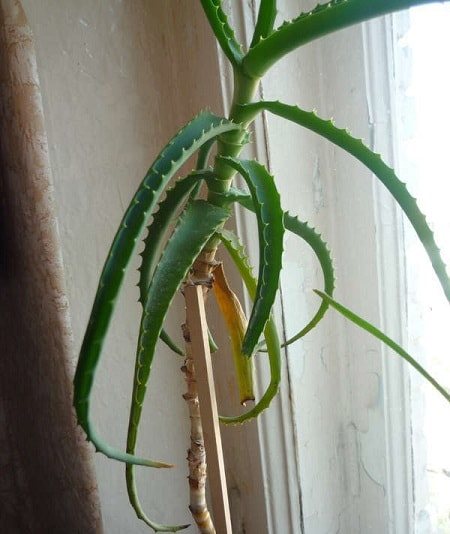

Aloe leaves curl for two reasons.
... The first reason is poor watering, high temperature and dry air in the apartment. In the summer, when it is hot outside and in the apartment, you need to water the plant abundantly, but only after the soil has completely dried, spray it regularly, but after the sun has set. Otherwise, burns in the form of red spots will appear on the aloe leaves. The second reason is hot wintering. In winter, aloe is often placed on a window near heating appliances. Near the batteries, the air is hot and dry, from which the aloe leaves curl. In such cases, aloe organizes artificial lighting away from heating devices, or arrange a cold winter.
Aloe leaves can curl if the root system rots.
... It is necessary to remove the plant from the pot and, without violating the integrity of the earthen coma, inspect the roots. They should be firm and light. If the roots of aloe are brown and flabby, they rot and must be removed. How to proceed with the aloe is written above.
How to save an agave if its root system is damaged?
What if the aloe roots are already partially rotted? An urgent plant transplant is required.
The transplantation process consists of several steps:
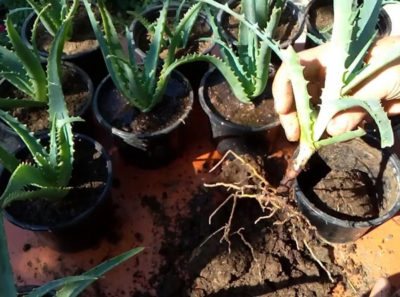

Remove the aloe from the pot, gently freeing it from the earth clod.- Rinse the roots with warm, running water
- Place the plant on a clean cloth or paper and dry the roots for a few hours
- Determine the extent of the injury.
- Use a clean, sharp knife to remove rotten roots to healthy tissue.
- Powder the slices with charcoal, sulfur powder, or a crushed activated charcoal tablet to prevent infection.
- Dry the cut roots for one day. Aloe tolerates this procedure painlessly.
- Prepare new soil for planting. The soil should be light, breathable with the addition of river sand in a 2: 1 ratio. You can use a ready-made cactus mixture.
- It is advisable to use a new pot for planting. If replacement is not possible, wash the old container thoroughly with soap and water.
- At the bottom of the pot, drain the sand.
- Pour over the prepared soil mixture and plant the plant without watering or slightly moistening the substrate.
- Place the plant in a warm, shaded place.
- Do the first watering three weeks after planting.
Diseases of aloe, photo
In addition to improper care, aloe can be affected by diseases such as root or dry rot, and pests such as thrips, spider mites, and scale insects. So, how and how to treat aloe disease? Photos and detailed instructions from specialists.
Aloe stopped growing even during the growing season, its leaves turn yellow, in some cases aloe leaves fall off the stem, the plant itself falls on its side. Aloe disease: root rot. Causes of the disease: excess moisture. From excessive watering, the root system suffers (rots). How is aloe treated? the plant must be removed from the ground and the roots must be carefully examined. Rotten and loose roots must be pruned. The soil from the pot is thrown away, the container is disinfected. A mixture of peat and sand is poured into the pot. Aloe is planted there for rooting. Watering is carried out very poorly and through the pallet. When watering, only the bottom layer of the soil should be moistened. Before the next watering, it should completely dry out. The lower the temperature of the plant and the less sunlight (artificial light), the less watering.
In severe cases, root rot affects the stem of the aloe. The leaves and stem of aloe are covered with large, soft-touch brown spots. The aloe root is completely rotten. Here you need to completely cut off the entire lower part of the flower down to healthy tissue. Powder the cut site with crushed activated carbon. Let the cut dry for 1-2 days, then sprinkle it with root and plant it in a mixture of peat and sand (1: 1). Plant care is described in the previous paragraph.
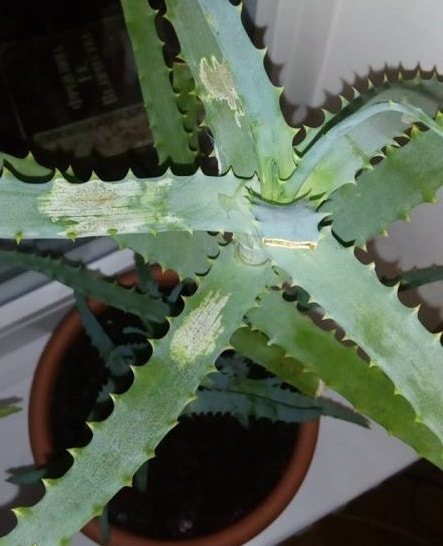

White spots appeared on the leaves of the aloe, similar to streaks. They increase in size over time, the disease spreads to other leaves of the flower and other plants. Infected aloe leaves turn yellow and dry. Small black dots can be found on the leaves of aloe. Aloe disease: thrips. Black, small dots are excrement. How to treat? Isolate the affected plant. It is necessary to process the aloe with Actara according to the instructions. Processing is carried out 4 times with intervals of 7-10 days. The higher the temperature in the house, the more frequent the treatment. For prevention, you need to spray the entire collection of flowers with Actara.
Why does aloe dry?
From an excess of moisture, when the root system is completely rotten. Aloe leaves dry out if the plant is planted in too heavy soil (clay based). Air does not enter the roots and there is a constant excess of moisture. But sometimes aloe leaves dry very quickly, without changing the previous color, that is, green aloe leaves dry. Reason: root rot. How is the disease treated? Dry rot is not treated, and the plant affected by it must be thrown away immediately, the pot must be disinfected. To prevent the appearance of dry rot, it is recommended to spray the entire collection with systemic fungicides once every six months.
Aloe is a type of succulent plant, and translated from Arabic, its name means "bitter". Even in ancient times, people appreciated the benefits of this culture, and also learned to use its juice and leaves. This juice is considered a prophylactic and remedy. It is used both and. Today, aloe can be found in many homes and apartments. Such its popularity is due to the medicinal properties of the culture and unpretentious care. But, despite the undemanding culture, aloe diseases are far from uncommon.
The healing properties of tree aloe


In medicine, aloe is used in the form of dry condensed juice (sabur), fresh juice and preparations for tissue therapy (biogenic stimulants: extracts, liniment, tablets).
The healing properties of aloe were known to the ancient civilizations of India, the Near and Far East, the Greeks, Romans, and the peoples of Africa. It was used to prepare medicines, magic drinks and ointments.
A detailed description of the properties of the plant was made by Dioscorides in the first century AD. The most famous and popular variety of the plant in those days was the aloe soccotrina (Aloe soccotrina).From sources that have come down from that time, Aristotle advised Alexander the Great to capture the island of Socotra before the start of his military campaign in order to freely supply his army with this miraculous plant, which has proven itself well in healing wounds. Alexander the Great himself was wounded by an arrow and healed with a medicine based on aloe juice.
In the XV-XVI centuries, Spanish conquerors and missionaries brought aloe to the New World, where it was cultivated in the vicinity of Catholic churches and was intensively used as a universal medicine. Thus, aloe has spread to Central and South America. But gradually the interest in him faded away.
During the Great Patriotic War, scientists again turned to the plant and began to use the juice to treat long-term non-healing wounds and ulcers, burns, including those from X-rays.
According to the Russian classification of medicines, aloe preparations are classified as agents affecting tissue metabolism - to the group of biogenic stimulants.
The effect of biostimulation was discovered in the late 1930s by the Russian academician, ophthalmologist V.P. Filatov, who drew attention to the fact that in the cells of tissues placed in stressful conditions (Filatov withstood cut aloe leaves for 10-12 days in the dark at a temperature of + 4-8 ° C), compounds are formed that increase their viability and the body as a whole. For this group of compounds VP Filatov first proposed the name "Biogenic stimulants". Aloe preparations have the ability to increase the protective functions of the body and enhance reparative processes (regeneration) in tissues. They have found wide application in skin grafting and in the treatment of eye diseases.
Features of aloe care
To prevent aloe from developing diseases, it is necessary to provide it with quality care. Here are the important factors for the favorable development of this culture:
You need to create good lighting. It is better to put the container with the plant on the windowsill on the south side. In cold weather, additional illumination is not required. In summer, the temperature should vary between 22-26 degrees, and in winter up to 12 degrees. In summer, the flower can be taken out on the terrace. Tolerates a lack of moisture in the air. But in the summertime, the air around the flower can be treated with a spray bottle. The accumulation of moisture on the leaves can provoke the appearance of fungal infections, and rotten leaves can also form. The bush requires abundant watering. The soil should have time to dry out between treatments.
In order for the plants to develop well, it is necessary to provide them with nutritious soil. To do this, you can buy ready-made soil or make it yourself. To avoid any diseases, it is recommended to carry out regular feeding.
Caring for a "home doctor" after transplant
When the agave has taken root, go to the mode of moderate moistening of the earth with water at room temperature.
It is recommended to water the agave twice a month during the warm season.
In the fall and winter, water the aloe once a month, or even leave the plant without water until spring. Make sure that the plant does not stand in the cold or in a draft.
Observing the golden rule for aloe, that dry content is better than waterlogging, you can enjoy the healthy look of the "home doctor" for a long time.
Rotten roots
But if the root has rotted, then this is evidence of the most common mistake, too abundant. If the roots have rotted, then the bush must be removed and the damaged parts removed, as well as the aloe leaves must be sorted out.
Each grower needs to have an idea of how to save a flower if the leaves turn yellow. Most often this happens with insufficient nutrition.
The leaves can turn yellow if you forget about feeding. Therefore, at home, aloe must be treated with special fertilizers for succulents. Also, a yellowish tint may appear if the flower lacks light.
The reasons
The causes of diseases and deterioration of the condition of the flower may be the wrong conditions of detention. The culture belongs to succulents, that is, in nature, this plant develops in hot climates in sandy light soils. And therefore, a common gardener mistake leading to rot is excessive watering.
With abundant watering, the soil spreads, and after drying, the soil sets and becomes hard. By virtue of its peculiarity, this plant breathes not only the ground part, but also the underground one, that is, carbon dioxide continuously enters the ground. All these processes form soil acidification, nutrients are transformed into forms that aloe cannot assimilate. Together, waterlogging and acidity of the soil lead to the occurrence of root diseases.
Another reason for decay processes can be a cramped container in which an agave is planted. An adult specimen weaves its roots into a tight ring. Frequent watering provokes dampness inside the earthen coma, and oxygen is not supplied at the same time.
The flower grower visually notices only the dried surface of the soil and continues to moisturize the plant. This stress causes the aloe to rot.
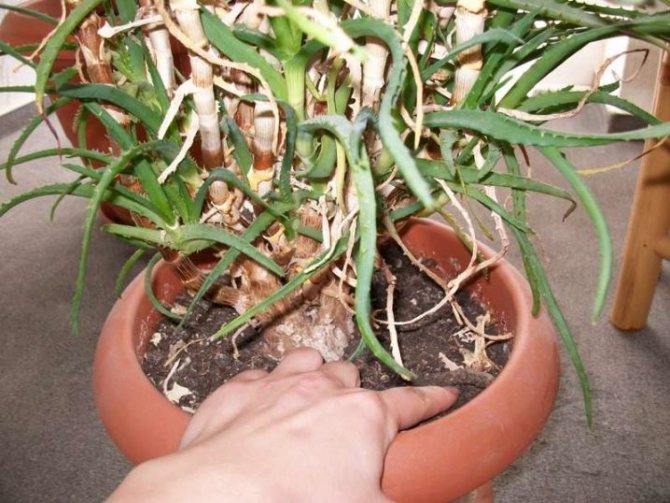

The situation becomes even worse if hypothermia is added to the overflow. This problem occurs most often in winter and autumn. At this time, cold air blows through the window cracks, the soil quickly freezes. The same consequences are possible due to watering the agave with cold water.
Disease-causing bacteria can develop due to improper feeding. For example, many growers tend to feed a withering specimen with fertilizers.
A diseased plant cannot be fertilized; this only enhances the development of harmful microorganisms. Manure and bird droppings are especially negative for aloe.
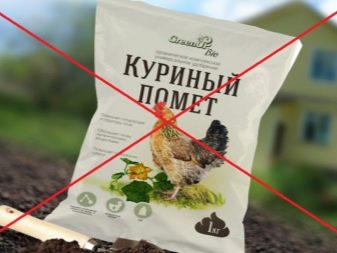

What do the spots mean
You can identify plant problems by looking at the color of the leaves. There may be such cases:
Brown spots on the leaves signal that the bushes lack moisture. In this case, you need to revise the scheme and watering periods. If the spots are darkish and soft, then the plants are bent from the fungus. In such a situation, you need to treat the bush with an antifungal drug. If the flower has acquired a black leaf, then this indicates severe pollution. In this case, salvation is in maintaining cleanliness and wiping the plants from dust. But if the leaves in the agave turn red, then this is not dangerous. Thus, the flower reacts to the sun's rays. If you put it in a darker place, then the leaves will soon return their color. Other problems:
Sometimes the plant withers and dies right with your eyes. If the leaves begin to curl and fall off, the water is too cold for irrigation. The flower may die if the leaves turn pale and wither. This happens with too much watering.
If the tips of the leaves of any aloe dry, and the edges turn yellow, then water with chlorine was used for irrigation, and the plant also lacks potassium.
How to rescue a frozen plant
There are no signs of pests or rot, but the aloe is still weak - why? A sign that the aloe is lacking light will be the faded color of the leaves. They become weak, often fall off for no apparent reason. The solution to the problem is simple - move the pot to a brighter place.
Photo of frozen aloe
The plant can freeze, a sign of which will be just as weakly holding on to the stem or falling leaves. It is likely that cool air is coming from the window or too cold water is being used for irrigation. Try to change the temperature of the water for irrigation and check the windows.
Careful and attentive plant care can prevent most of the diseases described. Don't worry about what to do - there are plenty of tips for saving aloe. Be careful in the future so you don't have to put them into practice.
What diseases affect
Most often, aloe is affected by two diseases - root and dry rot. With root rot, the roots rot from the abundance of water in the pot.In this case, the stem begins to dry out, and the plant does not change its size for a long time. To cure a flower, you need to dig it up and then prune any rotten roots. The remains are sprinkled with coal powder or sulfur. Then the bush needs to be moved to new soil. After an illness, watering cannot be performed for three weeks. Such a disease is difficult to treat, so sometimes the seedling has to be completely removed.
With dry rot, the bush can die imperceptibly, since the flower dries out from the inside, but outwardly it does not manifest itself in any way. For prevention, it is necessary to spray the plant with a fungicide from time to time.
How to detect the problem in time?
Root decay is often found with improper care. This is a dangerous disease that often leads to the death of the agave. Since the plant is in a pot, it is not always possible to understand that the root system is suffering. Therefore, regular examination of aloe is necessary in order to determine alarming symptoms by external signs.
Often, flower growers delay until the very last moment with removing the plant from the pot, fearing to harm it. They try to change the situation with top dressing or other measures, but this only aggravates the situation. There are no outward signs of improvement, but the “home doctor” continues to wither.
Aloe pests
Also, the plant can curl, change color and weaken due to pest damage.
Spider mite
The most dangerous is the spider mite. It is very difficult to notice it, since its dimensions are no more than 1 mm. In this case, the leaf can become covered with white spots and a barely noticeable cobweb appears. At a later stage, the stems and leaves turn scarlet.
For the treatment of adversity, drugs such as acaricides are used. As a preventive measure, the plant can be wiped with a tincture of garlic or an alcohol solution.
Shield
These insects can be easily seen. They are brown in color and look like plaques on leaves. At the same time, the leaves dry up and curl, and red-brown spots appear.
To combat such pests, you can use a tincture of garlic, which is used to rub the leaves.
Mealybug
When damaged by this pest, the flower is covered with a white bloom. In this case, aloe can rot. It is not difficult to deal with such an insect. Since it does not tolerate moisture, each leaf must be washed with alcohol or vinegar solution. For preventive purposes, dry air and soil should not be allowed. Leaves should be wiped with a damp cloth frequently. Such care will avoid the appearance of the pest.
Such insects appear in humid and hot rooms. Pests can be recognized by the silvery stripes on the leaves. Chemicals are used to combat such insects. After processing the plants, the procedure must be repeated in a week. It is better to take the affected plants to another room.
Despite its endurance and vitality, aloe needs special care. With proper care and preventive measures, you can grow a beautiful and healthy plant that will decorate your apartment for many years. Timely treatment of diseased or pest-affected leaves will help save the plant.
Why does aloe dry? This means that the plant not transplanted for a long time
... The roots have taken up all the free space in the pot, because of this, the aloe does not receive enough nutrients. He has to feed on older leaves, so the tips dry out. In this case, you need.
Before transplanting, it is better not to water the plant for several days, then it will be easier to pull it out. The new pot should be free and spacious
:
- if the roots have grown on the sides, you need to take a wider pot;
- if the roots grew down, the pot should be taller.
Leaves curl
Why do aloe leaves curl? This is how the plant shows that it not enough care
... It is necessary to wipe the leaves from dust, sprinkle with clean water once a week (in the summer, twice a week).
Thin leaves
Why does aloe have thin leaves? Possible two reasons
:
- lack of lighting - the leaves are struggling to reach the light, while stretching and thinning;
- lack of watering - the leaves do not have enough moisture, they become less juicy.
In general, aloe can be watered in two different ways - from the top and through the pan. The main thing to remember is that all the soil in the pot must be shed properly. If you water only the upper layer, the lower roots will lack water and nutrients. In this case, the earth will dry out quickly, you will have to water more often - the aloe can rot.
The best option is to pour water into the sump. The main roots of aloe are the lower ones, they will take for themselves the necessary amount of water. After an hour, the remaining liquid must be drained.
The tips of the leaves turn yellow
Why do aloe leaf tips turn yellow? What to do? This usually happens with a lack of nutrition
... The centenary needs to be fed once a month with special fertilizers for cacti or. In winter, the aloe rests, no additional food is required.
Also, the leaves can turn yellow if the aloe does not have enough light. In this case, it will be enough just to rearrange the plant in a more illuminated place.
Stains
Depending on the type of stains on the aloe and their color
different problems can be diagnosed:
- brown spots indicate that the aloe does not have enough moisture (you need to change the irrigation system);
- if the spots are soft and dark, the plant may be infected with a fungus (it is necessary to treat with an antifungal agent);
- the leaves can become covered with black spots - this means that they are heavily contaminated (you need to wipe them from dust more often).
The leaves turned red
Thus, the agave only responds to too bright sun
, nothing to worry about.
If you rearrange it in a shady place, the leaves will soon return to their green color.
Withers
It happens that aloe dies right before our eyes
:
- if leaves suddenly begin to fall off - the water for irrigation is too cold (it is better to always keep the water in the watering can next to the aloe, then the temperature will be optimal);
- if the leaves take on an unhealthy look, wither and turn pale, there is too much water in the ground (watering must be urgently adjusted).
Symptoms
Most often, deterioration is associated with decay. Most diseases affect the roots of the plant, the root system begins to rot, and at an early stage the process is invisible.
If the grower has a suspicion of the formation of a putrefactive process, it is necessary to remove the culture from the pot and examine the roots.
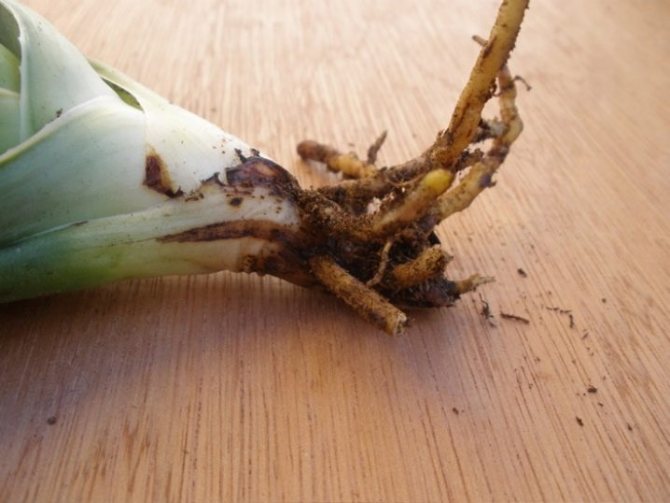

Also, a symptom of the onset of the disease is the cessation of growth or its slowdown. Old leaves dry up, the trunk also dries up, the lower leaves crumble. In the zone of the root collar, the plant becomes so thin that it may even break.
Diseases
Basically, aloe at home suffers from two diseases - root rot and dry rot
... It is important to recognize the disease in time and have time to save the plant.
Root rot
Roots start to rot from excess water in the pot
... The reason is very frequent and abundant watering. This disease can be recognized by the following signs:
- the stem of the aloe dries up;
- the plant does not react in any way to watering;
- does not grow - for a long time the aloe does not change its size.
You can try to cure this disease. The plant must be dug up, carefully cut off all rotten roots. Sprinkle the leftovers with sulfur or charcoal powder, then plant the aloe in a spacious pot. It is good if there is a lot of sand in the soil.
After aloe root rot, it is best not to water for at least three weeks.
Even if the disease has struck not only the roots, but also the leaves, you can try to save the aloe. For this you need to use the "apical cuttings" method
:
- the very top of the aloe is cut off (about 15 cm);
- it is dried for at least two weeks in a dry and warm room;
- a dried stalk is planted in dry soil in a small pot and so waits for spring;
- in the spring you need to gradually start watering aloe, quite a bit;
- if young green leaves appear, the plant is saved!
The decayed parts of the aloe must be thrown away along with the pot in which it grew. The disease persists well in the ground and on the walls of the dishes, so another plant may get sick.
Dry rot
Unfortunately, it is very difficult to recognize this disease in time, therefore, in most cases, the aloe dies.
There is only one symptom - the plant dries from the inside, but outwardly it may not be expressed in any way.
The only way to escape is timely prevention
.
To do this, periodically aloe must be sprayed with a fungicide (antifungal agents).
Signs of decay of the plant root system
- With a regular inspection of the agave, you can notice that the growth has stopped or slowed down, and the plant does not react to watering in any way.
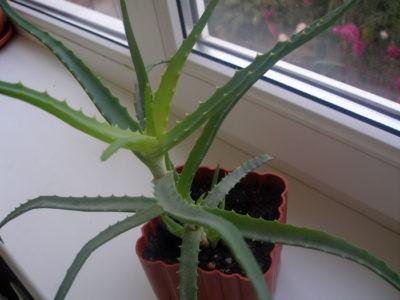

Withering of old leaves begins.- The stem of the aloe begins to be strongly exposed at the bottom.
- The trunk shrinks.
- At the root collar, the plant becomes so thin that it may even break off. the causes of problems with leaves and about the features of care, you can find out here.
- In appearance, the agave looks satisfactory, but the lower leaves become soft, loose, as if soaked in water. the causes of problems with leaves, as well as about the features of care, can be found here.
- A strong, pungent, unpleasant smell comes from the pot.
Causes of occurrence
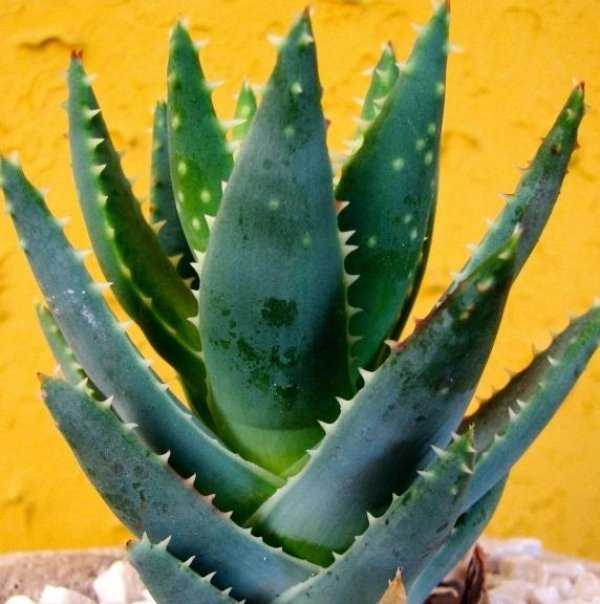

As you know, various diseases and parasites appear on the agave (popular name for aloe) and other indoor flowers due to violations of the rules of care. Most often, the cause of the painful condition of aloe lies in the following points:
- violation of the water regime, which leads to the accumulation of water in the ground;
- violation of the light regime;
- improper feeding.
Problems with the flower (disease or insects) can appear even with a slight violation of the rules for keeping the succulent.
Let us consider in more detail each reason that can provoke the death of the agave, as well as its infection with pathogenic microflora or pests.
Excess moisture
Aloe is a succulent plant. Therefore, he is able to be without water for some time without serious consequences for himself. Watering from spring to autumn is performed once a week. In winter, the application of moisture to the pot should be reduced. At this time, the flower is watered 2 times a month, or even less often.
If you fill the plant, then the excess moisture in the ground most often leads to rotting of the root system. The affected roots can simply burst when pressed.
As a result, homemade aloe shows signs of lack of nutrition: the leaves begin to turn yellow and dry, spots appear on the leaf plate, the plate itself becomes soft and may even begin to rot. If you don't know why aloe leaves turn yellow, study its roots. Perhaps they are the problem.
It should be noted that excess soil moisture serves as an excellent environment for the development of various diseases. If nothing is done, the plant may eventually die.
The centenary is considered a light-loving plant. Therefore, it should grow on the east or south windows. At the same time, direct sunlight can fall on it, because in the wild, aloe grows in desert regions. In summer, the flower needs to be exposed to the street so that it can take sun baths.
If there is little light, the aloe leaf will become pale and watery. Then the thin stems will start to rot. First, the tip of the leaf will turn brown, and then the pathology will spread to its entire surface. In order to keep your home doctor, you need to understand why aloe rots or begins to wilt.
Feeding errors
A difficultly determined cause of aloe vera disease or parasite damage is improper feeding. If the plant is deficient in nutrients, then it stops growing and begins to show signs of malaise. For example, a bush can dry out or gradually die from putrefactive processes.
Mistakes in fertilizing a pot with this indoor flower can lead to the fact that the root will receive a chemical burn. This will kill the aloe.With excessive feeding, the fleshy leaf will begin to turn yellow and will soon fall off. Leaf fall usually begins with the lowest leaves. Dried leaves can break easily.
As you can see, the external manifestations of all three disorders in the care of this medicinal succulent have similar symptoms. Therefore, it is very difficult to immediately determine why the leaves of aloe are drying. Having identified the cause of the pathology, as well as the accompanying problems (ailments and pests), you can have time to save the plant.
Excess moisture
Aloe for youthful skin
Acting on the deep layers of the epidermis, the biologically active elements of the agave extract increase blood microcirculation, improve intercellular communication, and accelerate tissue regeneration. The last property of aloe is especially relevant for people over 35 years old, because the natural functions of the skin at this age weaken and the first signs of aging appear.
Agave Smoothing Mask:
- fresh aloe juice - 2 tbsp. spoons;
- grated apple and avocado - 1 tbsp each spoon;
- homemade sour cream - 1 tbsp. the spoon.
All components of the mask are mixed until smooth. The mass is spread with a brush over the entire surface of the face and lasts for 25 minutes, after which it is washed off with acidified water.
Mask for "crow's feet" at the outer corners of the eyes:
- aloe juice - 25 ml;
- unrefined olive oil - 10 ml;
- wheat germ oil or almond oil - 1/3 teaspoon.
The oil must be slightly warmed up before mixing, then quickly prepare the composition until it is completely cool. Dip your fingertips into the mixture and gently, without stretching the skin around the eyes, apply the mask to the problem area. After 25 minutes, the substance is washed off.
Rescue a frozen plant
If the leaves become soft and fall off the trunk easily, this is a sign of freezing of the aloe. This can happen if the plant is watered with very low temperature water or left in a cold draft, especially during winter. You need to check the water and all sources of air flow in the house - the window and the door. It is better to store water in a container next to the aloe, then its temperature will be room temperature, suitable for watering. If it blows from the window where the flower is, you need to move it to another window sill.
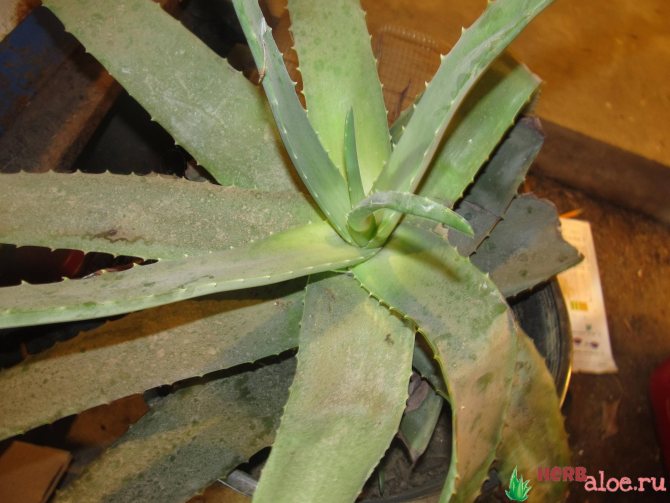

Knowing how to save the aloe if it dies, you can restore the plant, even if the case seems hopeless. But it is equally important to know how to prevent the danger using the correct systematic approach to plant maintenance. Sufficient watering, optimal natural lighting, timely detection of diseases and pests - all this is the key to the health and strength of a plant that will live for many years.
Root rot
The centenary, more often than other diseases, begins to die due to the developed root rot. This type of rot occurs at low temperatures and over-watering. If the disease is not detected at an early stage, the flower will definitely rot. If he died, he cannot be reanimated by any means.
The following signs indicate root rot:
- slowdown in growth;
- the stem begins to dry;
- adding water does not improve the situation.
Unlike root rot, the dry variety has no outward appearance. The flower can rot very quickly. At the same time, it is generally not clear why the aloe dies.
Aloe for acne
The antiseptic medicinal properties of aloe tree have found application in the elimination of acne and comedones, as well as in the healing of acne scars and tissue regeneration after mechanical cleaning. It is allowed to use whole juice, with its application locally or on the entire surface of the face, and for a complex effect on problem skin, you can try multicomponent formulations.
For oily skin with large pores, a lemon-protein acne mask is suitable:
- 1 tbsp. a spoonful of chopped aloe pulp;
- egg white;
- 1 teaspoon of lemon juice.
All components mix well and the mask is applied with a brush for 15 minutes, after which it is washed off with cool water.
Honey mask for rough, tired skin with clogged pores:
- 2 hspoons of aloe juice;
- 1 teaspoon of liquid honey.
To enhance the softening effect, add 1-2 tablespoons of heavy unleavened cream to the mask. The finished product is applied with a brush and kept on the face until a crust forms, then washed off with warm water.


For what reasons the flower died, what to do with it?
As a rule, aloe die as a result of neglected diseases or pests, as well as from improper care. Most often, the death of aloe is caused not so much by illness as by inattention, since with timely detection of problems, they can almost always be solved.
If the flower has died or rotted, then it is no longer possible to help it, it remains only to throw it away. If the root or stem has not completely rotted and they have a healthy part, then you can try to reanimate the aloe.
Habitat and growing conditions in nature
The homeland of the Aloe tree is considered to be the southeastern part of the African continent. The natural habitat of the plant is mountainous regions in which a subtropical climate prevails. Hardy ages are the main representatives of the flora in the Cape and Drakensberg mountains, stretching across Malawi, Swaziland, South Africa, Lesotho and Zimbabwe. You can also meet him on the Comoros, Madagascar, Agelaga.
Century is one of the few aloe species that feels equally comfortable at the foot of the hills and high in the mountains. Its dense thickets even cover the rocky ridges and rocky cliffs of the eastern slopes, at an altitude of 2000 m above sea level. No wonder the African word "krantz", which served as the name for the entire species of krantz aloe, literally translates - "rocky cliff".
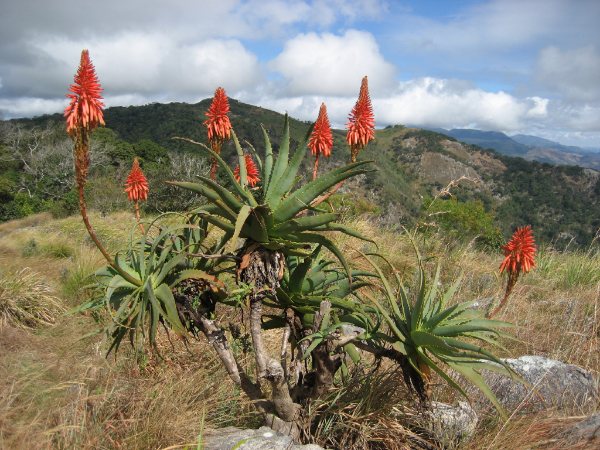

Tree scarlet in africa
Although it prefers to grow on rocky slopes and debris, aloe arborescens adapt easily to loamy and sandy soils in tropical and temperate climatic zones.
Why is aloe withered
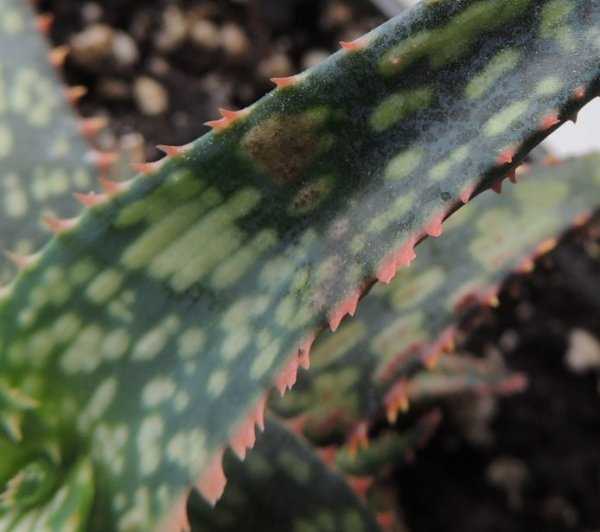

Effectiveness as a medicine does not save the plant from its own diseases. Diseases of aloe are not common, but if it gets sick, you need to take immediate action. A centenary with a neglected disease can die very quickly.
Why is aloe withered? There are not very many ailments affecting this useful plant. They often arise from improper home care of aloe. Aloe is a rather unpretentious plant, so many owners neglect to comply with all the rules, catching themselves only when it already begins to die. How to save an already diseased plant? First you need to correctly identify the disease.
A diseased plant has enough external signs to notice them immediately. The salvation of the plant also depends on the correct recognized disease.
There are three common causes of the onset of the disease:
- pests (spider mites, scale insects, mealybugs);
- dry rot;
- root rot.
Due to the fact that aloe rarely gets sick and the pathogens have been identified, methods of dealing with them have already been developed. The most important thing is to quickly notice and recognize the trouble that has arisen, otherwise the agave dies.
Aloe pests
A diseased plant can be seen immediately - the leaves of aloe become stunted, lose color, the plant simply looks weakened. In addition, all types of pests, except for the spider mite, manifest themselves quite obviously.
Spider mite
It is considered one of the most dangerous pests that can infect homemade aloe. The size of adults is not more than 1 mm; it is very difficult and almost impossible to notice it. You can recognize the appearance of a tick by some signs - a barely noticeable cobweb appears on the aloe, the color of the leaves changes. You can find a small insect from the seamy side of the leaves, if the disease is running, there will be enough ticks to see them.
The main symptom of the disease, based on the name of the pest, is the cobweb. But the color of the leaves is much more dangerous. At the very beginning of the disease, they acquire a yellow color.In other words, the leaves turn pale and dry out. All these signs can be easily attributed to the lack of watering and minerals in the soil for aloe. The late stage of the spider mite manifests itself very clearly - the leaves and stems of aloe are colored scarlet.
The fight against the pest must be started when the first signs appear. Especially if the aloe is surrounded by other houseplants, as it spreads instantly. Despite the fact that this is an insect, simple remedies for them will not help.
- For treatment, you need to use specialized drugs - acaricides.
- Disease prevention will not hurt. You should often wipe the plant with a solution of water and alcohol or spray with a tincture of garlic. The lower leaves need special attention, since this is where insects are grouped.
- Do not allow the plant to dry out. The ideal conditions for the emergence of mites are created by dry soil and non-humidified air.
The pest is very easy to see, despite its small size. Insects are brown in color and look like plaques on the stems and leaves of the plant. The scale insect acts on the plant as a depressant, in fact affecting its ability to photosynthesis. The leaves will begin to dry out, and reddish-brown spots will appear on them.
The false shield is doubly dangerous. Forming a vacuum, the pest sucks out useful substances and part of the pulp of the plant there, and injects a poisonous substance into the formed hole. The poison of the pest interferes with the active photosynthesis of the plant, it quickly disappears.
The plant affected by this pest must be immediately removed from the room until complete recovery, and the place where it stood should be wiped. It will not be superfluous to transplant the aloe into another pot, and disinfect the old one. There are enough specialized pest control products available, just follow the directions and the plant will be saved.
There are a lot of folk remedies for fighting the pest.
- In this case, garlic tincture will also help, it will not be superfluous to wipe the leaves with alcohol wipes.
- A soapy solution with the addition of machine oil is suitable - you need to mix oil and soap in equal proportions, process the aloe and wrap in film for several hours. The procedure is very effective; it can be repeated if necessary only after a week.
Mealybug
The simplest pest that will harm only when neglected is the mealybug. It is quite simple to define it - aloe is covered with a bloom, similar to wax. The plant can quickly rot if the disease that has appeared is not noticed in time.
It is easy to destroy this pest.
- The insect does not like moisture, just rinse each leaf well with alcohol or vinegar solution. After the procedure, hide the pot in a place where there is always a shadow. Remember, do not put the pot in the dark - the plant will die from lack of light.
- As a preventive measure against the appearance of a mealybug, do not allow the soil and surrounding air to dry out.
- Wipe aloe leaves often with a damp cloth. Low-cost care can help prevent pests.
Aloe pests
Spider mite
Prevention measures
Usually, diseases and the appearance of parasites on aloe are difficult to identify until the pathology goes too far. Often, flower treatment is ineffective. Therefore, it is much easier to carry out preventive measures than to treat a “home doctor”.
To avoid infection of the flower when its leaves turn yellow or begin to curl, you can do the following:
- proper watering of the flower. Moreover, you should not allow excessive moisture and dryness;
- preventive spraying against diseases and pests;
- creating optimal conditions for the flower;
- applying dressings only during the warm period and no more than 1 time per month;
- periodic inspections of the plant. They will allow you to identify the first signs of disease or the appearance of insects.
Now you know that if the aloe dries up, you need to quickly look for the reasons.Suddenly your "home doctor" has been attacked by pests or is ill.
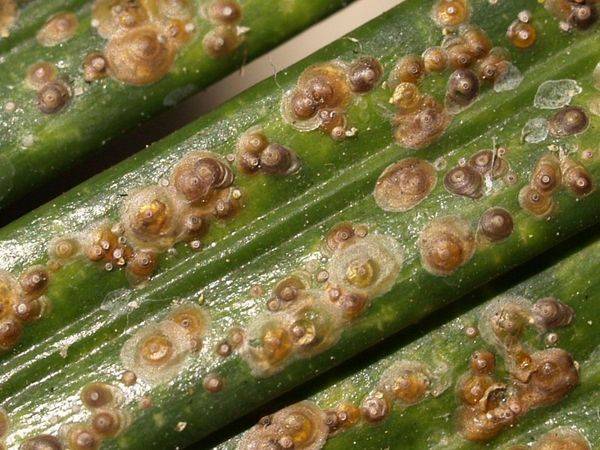

Aloe in dentistry
Deficiency of vitamins negatively affects the health of the gums - they become loose, which leads to bleeding of soft tissues and loosening of the teeth. To get rid of this problem, complex therapy is required - rinsing the mouth with therapeutic compositions with aloe and regular intake of increased doses of multivitamins.
In order to restore the normal structure of the gingival tissues, the plant juice diluted with water 1: 1 is used. The same concentration of the substance can be used for stomatitis, gingivitis, periodontal disease. The low sensitivity of the oral cavity allows you to use undiluted agave juice or even chew whole leaves together with the skin (after cutting off the thorns).
In some cases of high complexity of periodontal disease or scurvy, it is suggested to make compresses from finely chopped leaves of the plant. The course of treatment will depend on the degree of neglect of the pathology, but the procedures should be carried out every day, with an increase in time by an hour (in the absence of irritation). The maximum allowable time for the compress in the mouth is ten hours.
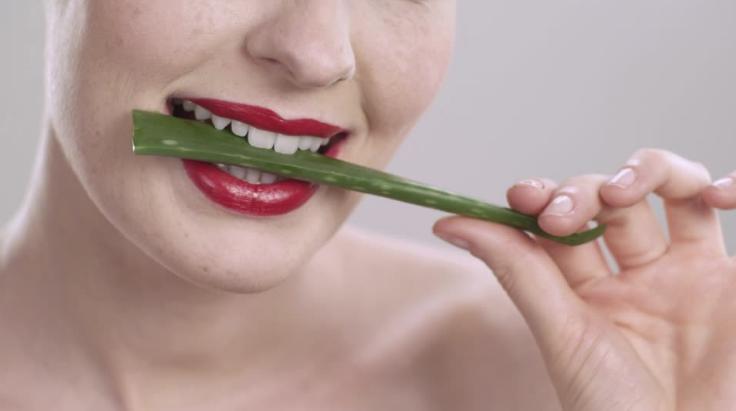

Contraindications
Aloe is not prescribed in any form during pregnancy and lactation, as well as for bleeding of any etiology (including monthly in women). Other contraindications for aloe tree are:
- renal failure;
- cholecystitis;
- any diseases of the acute phase of the course;
- the presence of polyps;
- chronic or acute cystitis.
It is undesirable to use preparations containing agave extract for children under 12 years of age and people over 65 years of age.
Aloe rots what to do?
Root rot
Typically, damage occurs when the soil moisture is too high. Aloe can be saved only with early diagnosis of the disease.
External signs of the disease:
- Decay of roots
- dry stem
- does not respond to watering.
Control measures If the roots rot only partially, all affected parts of the roots must be removed, and the rest should be well sprinkled with coal powder or sulfur, and then planted in fresh soil with a large proportion of sand. After two to three weeks, water very carefully. If the roots have rotted completely, then at least the upper part of the stem can be saved by making a stalk out of it. It is necessary to cut off part of the stem so that only healthy tissue remains.
Dry rot
The disease occurs when the plants are not maintained correctly.
External signs
Outwardly, this is not visible, while rot does not appear. The plant simply dries up, without noticeably changing color and shape, but it turns out to be completely dry inside. Moreover, all this happens very quickly, which usually does not have time to notice the initial period.
Control measures Since this disease proceeds too quickly and methods of combating it have not yet been invented, the plant dies. But you can prevent the disease by periodically doing preventive spraying with a systemic fungicide.
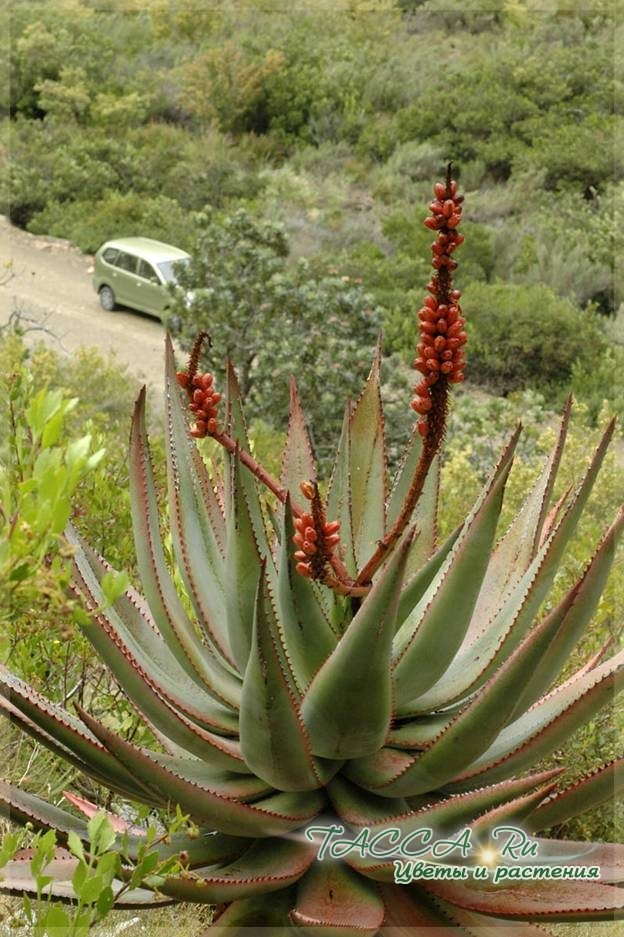

Aloe (Aloe) at home, photo, care.
Asphodelaceae(Asphodelic)
Aloe grows very well at home, even with little care. Some types of aloe bloom at home.
Description. Among the more than three hundred species of aloe, distributed mainly in the tropics of the Old World, there are plants with a variety of appearances. These are perennial herbaceous or shrubby or tree-like plants, reaching 10-15 m in height and up to 2 m in trunk diameter (Aloe bainesii, Aloe pillansii), rarely vines (Aloe ciliaris). Aloe leaves are juicy, of various lengths and shapes, smooth or with small thorns along the edges, and sometimes over the entire surface. They are arranged in a spiral; sometimes the arrangement of leaves is two-row (Aloe plicatilis). Many types of aloe produce numerous shoots at the bottom of the stem, forming groups. Certain species, such as Boutner's aloe, produce an underground bulb, which persists during a dry period unfavorable for the plant, while the leaves die off, just like in most varieties of hippeastrum.Opposite or spirally arranged leaves in all genera are coarsely fleshy and for the most part very juicy; from more or less covering the stem of the base are linear-lanceolate, gradually tapering; often grooved on the upper side; are smooth, wrinkled, or warty; often horn-shaped or acicular at the edges; in some genera are covered with spots. Between them rises the main or lateral pedicel, glabrous or with scaly leaves, often reaching a height of one meter and bearing a simple ear or brush or a panicle composed of them for the most part beautiful, usually yellow-red or purple, straight, inclined or hanging flowers with segmented pedicels equipped with bracts. The calyx is inconspicuous, and the corolla is tubular, bell-shaped, orange, yellow, coral, rarely white. At the bottom, the corolla is often globularly widened, and sweet nectar accumulates there, attracting pollinators: sunbirds, bees, day and night butterflies. Flowering in some species of aloe occurs in summer, at home most of them do not bloom, this is due to the fact that at home it is rather difficult to create the required temperature (12-14 ° C) and good lighting, as a result of which the plants do not fall into rest period. The fruit of the aloe is a box with numerous flat or irregularly triangular seeds surrounded by a translucent pterygoid seed plant.
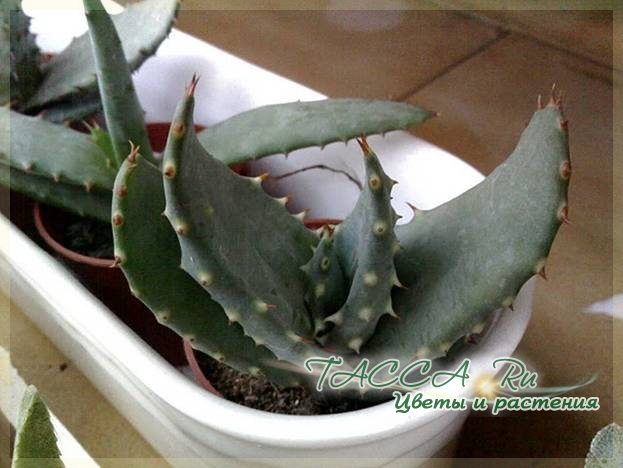

Many species of aloe, with a shortened stem and rosette of fleshy leaves, resemble agave in appearance - this is another example of convergent similarity, when unrelated species, adapting to similar environmental conditions, become very similar in appearance. By the way, when agaves first came to Europe in the 16th century, they were often called "American aloe". One and a half dozen representatives of the genus have been popular since ancient times as medicinal plants. Aloe vera, as well as other species later, were attributed to magical properties. The custom of the peoples of the Middle East to hang aloe branches over the entrance to the house supposedly contributes to the long life and prosperity of the inhabitants of the house. This is obviously due to the fact that aloe without water and soil can live for several years. This custom was known in ancient Assyro-Babylonia 2000 years ago. In Egypt, it has survived to the present day. In Akkadian aloe, the present was si-ba-ru. From him came the Arabic sabr, saber, which means patience, endurance, in Russian sabur - dry condensed aloe juice, used in medicine in the treatment of burns, trophic ulcers, abscesses, phlegmon; when taken orally, it acts as a laxative. An aqueous extract from the leaves, prepared according to the method of Academician Filatov, is used in the treatment of eye diseases. In folk medicine, agave leaves are used externally as a wound healing agent, internally - in the treatment of pulmonary tuberculosis. Aloe juice contains organic acids (succinic, acetic, coffee, etc.), aloin and phenols, which, like coffee, have a biostimulating effect. In addition to aloe tree, about 15 species (including Aloe vera, Aloe ferox, Aloe succotrina) are used as medicinal plants. A large number of species are excellent and unpretentious plants for rooms and large halls.
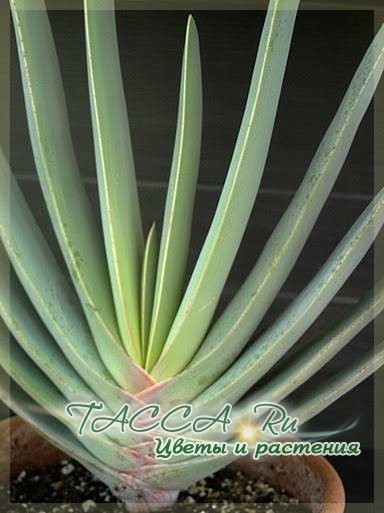

Homeland. In nature, there are about 350 species of aloe and many varieties and natural hybrid forms. Aloe is widespread in southern and tropical (mainly Somalia and Ethiopia) Africa, the Arabian Peninsula, Socotra Island, Macronesia. About 50 species of aloe are found in Madagascar. About 80% of the South African species are concentrated in the Transvaal. Aloe live in coastal semi-desert areas among thickets of thorny bushes, in savannas on sandy and gravelly soils, in mountain deserts at an altitude of 2750 m above sea level. Some species, such as the aloe Marlota, the undaunted aloe, form real forests.
Due to its decorative and medicinal properties, as well as relatively easy and rapid reproduction at home, many types of aloe have been naturalized in the Mediterranean countries, India, the island of Ceylon, Mexico, and Cuba. Aloe tree-like, or agave, has become a popular houseplant. One of the ancient medicinal plants is aloe vera, real, or Barbados (Aloe vera = Aloe barbadensis). It was brought to Europe by the Spaniards, from where it spread to the island of Barbados and to many countries in Southeast Asia.
Dimensions. 10-50 cm for ordinary indoor aloe, up to 2 m for some species.
Location. Aloev at home loves a sunny place, but on especially hot days it must be protected from direct sunlight.
Temperature. In winter, plants are kept at 10 ... 12 ° C, in summer they are protected from the hot rays of the sun, otherwise the leaves turn red and wrinkle.
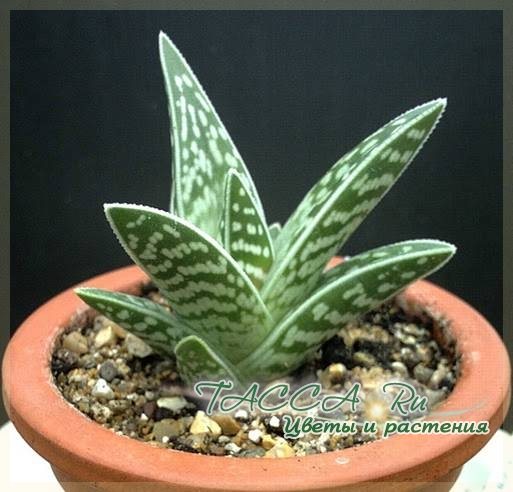

Substrate. Aloe substrate at home needs loose, breathable, fertile: a mixture of clay-sod and leafy soil (3: 2) with the addition of a small amount of charcoal, sand, expanded clay, peat.
Air humidity... Caring for aloe at home is not burdened with constant spraying, he does not need it.
Watering. You can hardly do something wrong by caring for such an unpretentious plant like aloe. However, it should be borne in mind that abundant watering, which creates stagnation of water in the sump, is destructive for aloe: succulents have tender roots that are prone to decay. Watering is best done by immersing the pot in water for 10 minutes, not allowing water to accumulate in the leaf outlet. Water the plant usually once a week, but if the heat is intense or the flower is in bright sunlight, water the aloe a little more often. Let the substrate dry slightly between waterings. It is worth feeding it only once a month during the period of active growth; self-made fertilizers are also well suited for these purposes. In winter, water after 3-4 weeks.
Transfer... Transplanting young aloe plants annually, adults - once every 2-3 years.
Reproduction... Aloe can be propagated at home by seeds, cuttings, basal layers and individual whole leaves. Cutting succeeds almost all year round, but better in spring and summer. In the spring, separate the side shoots from the aloe or cuttings when the leaves are just beginning to form a rosette. They will ooze a sticky sap, so let them dry at room temperature for 2-5 days before planting in a slightly dampened mixture of compost and sand. Aloe can be especially large with large and fleshy leaves if its daughter rosettes are removed in a timely manner.
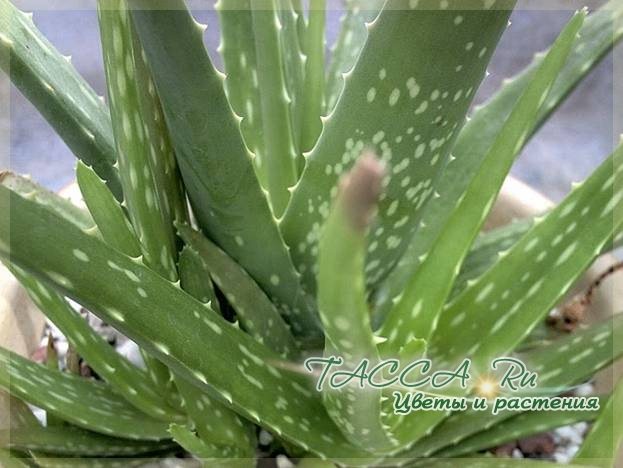

Special requirements. If the aloe is outside, do not allow water to accumulate in the center of the outlet during rainy weather.
Aloe pests. Perhaps the most unpleasant thing about aloe cultivation is that sooner or later you have to deal with their "sores". Regular inspection of the collection will allow you to immediately notice the pests and urgently take action: first of all, you need to isolate the diseased or affected plant and closely monitor the rest of the specimens for several days. The correct diagnosis is extremely important, because then the treatment will be appropriate. At home, aloe is attacked by both specialized, "succulent" pests, obviously imported from natural habitats, and non-specialized ones. The key to a successful fight is the correct and timely determination of the type of pest. Most aloe pests are visible with the naked eye, but some can only be seen with a magnifying glass.
Shields... The scabbard pierces the plant and sucks its juice, it can infect it with viruses and contributes to the development of mold and fungal diseases. The body is up to 2 mm long, covered with a wax shield on top, hence the name. In home collections of succulents, it is quite rare.
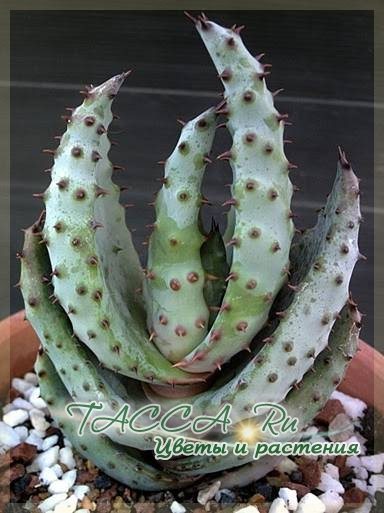

External signs.Due to the protective coloration, the pests become noticeable only during massive reproduction, when their grayish-white or yellowish scales-scutes form large colonies on the stems. Damaged areas develop yellowish or reddish-brown spots that can lead to the death of plant parts.
Control measures. Since the shield is protected by a rigid shield, it is very difficult to completely lime it, even if you use strong chemicals. It is easiest to destroy these sedentary insects at the very beginning of their appearance. For mechanical cleaning of pests, the stems are wiped with a vinegar solution. In addition to adult insects, larvae invisible to the naked eye can remain on the surface of the plant. To destroy them, subsequent treatment with insecticidal preparations is necessary. There are no specialized chemicals to combat the shield, so it is necessary to choose an insecticide with the widest spectrum of action.
Spider mite (red spider) - one of the most difficult to eradicate pests of indoor plants. It is difficult to notice it with the naked eye, since it is quite small. The largest specimens reach approximately 1 mm in length and have an oval body. The accelerated development and reproduction of spider mites is promoted by warmth, dryness and a poorly ventilated room. Spider mites are able to crawl far enough from an infected plant and quickly populate the entire collection. Therefore, it is important to detect affected plants in time and isolate them from the collection.
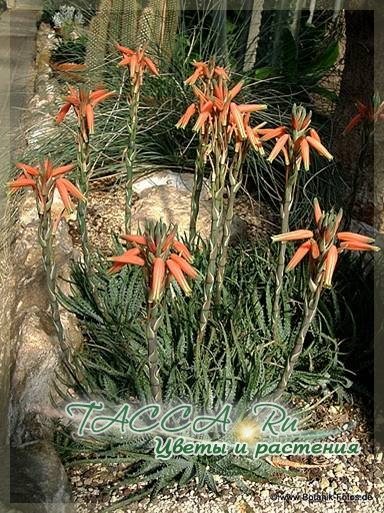

External signs. The pest feeds by sucking the cell sap of the plant. The color of the stems with a strong lesion changes to yellow-gray or brown-red. In later stages, a cobweb is visible on the plant, along which small reddish-brown dots move - this is the spider mite. The plant stops growing.
Control measures. Spraying and washing with water; wiping with a brush or spraying with solutions of alcohol, garlic tincture. The simplest measure is regular spraying with cold infusion of tobacco or soap, since this pest does not tolerate cold water. However, it is unacceptable to constantly spray plants in winter, therefore, the appearance of chemical preparations greatly facilitated the work of eliminating these pests. Ticks are not insects, but are arachnids, so insect pests in most cases do not work on them.
There are special chemicals against ticks - acaricides. The most common of them are Aktellik, Neoron, Rogor, Fitoverm, Akarin. However, after several treatments, the drugs cease to work and must be replaced with others. Since the pincers are able to move easily, it is necessary to process the entire collection at once, as well as all cracks and secluded places.
Mealybugs - sucking insects, clearly visible to the naked eye. They got their name from the white, cotton-like waxy discharge. Insects are very mobile and move well at almost any age, are covered with white hairs, and have outgrowths on the body. Sizes: 3-6 mm.
External signs. Mealybugs are easy to spot as they are much larger than spider mites. Affected plants look like they are covered in fluff or cotton wool. As a result of the spread of the mealybug, plants are greatly delayed in growth.
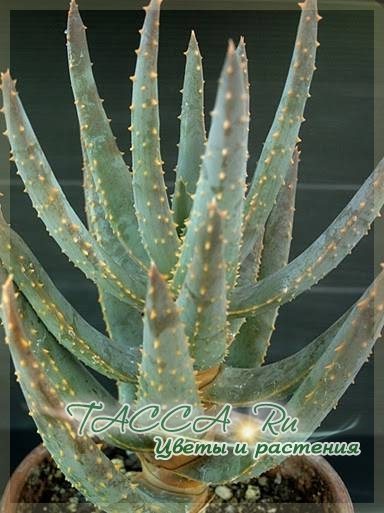

Control measures. In case of minor damage, mechanical means of struggle can be used. This is best done with tweezers or a brush. The affected surfaces can be treated with an infusion of finely chopped garlic in 70% alcohol. Within 3-4 days, the treated plants must be shaded from sunlight. In case of severe damage, plants can be treated with insecticides (Aktellik, Intavir, Decis, Fosbecid, Fufanon).
Nematodes... Several types of root and stem nematodes are known to infect aloe.Root nematodes are the most dangerous pests for succulents. These microscopic worms are detected only by the morphological changes in plants they cause, in particular, by gall formations on the roots or by cysts.
External signs. When aloe is damaged, it stays behind in growth, and large swellings are noticeable on its roots. At the first suspicion, the plant is taken out of the ground, and the roots are rinsed in a jar of water. If tiny "poppy" grains appear on the surface of the water, then these are nematodes.
Control measures. It is difficult to deal with this pest. Having found a nematode, all the affected (knotty) roots are cut out and the aloe is rooted again or the soil is shed by the preparations "Tecta" and "Vidat".
Thrips - small insects with an elongated (1 - 1.5 mm) body. The body of adults is black and dark brown with two pairs of wings bordered by long hairs, sometimes with transverse stripes. The larva is light yellow, about 1 mm long. Humidity and heat contribute to the spread of these insects, so there are quite a few of them in greenhouses and greenhouses.
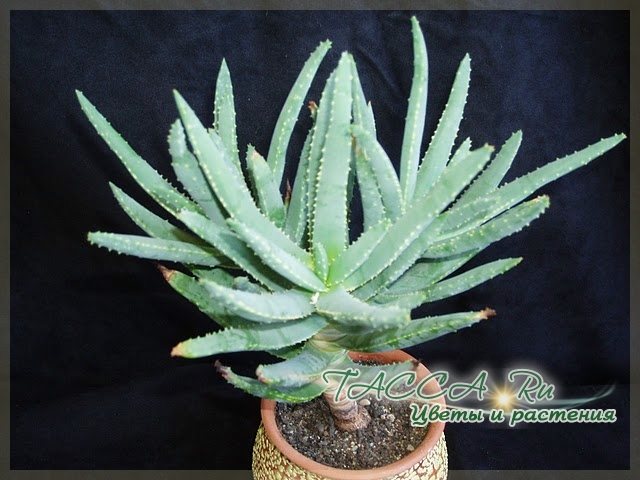

External signs. Thrips move, leaving characteristic silvery streaks. An external sign of damage is also numerous traces of excrement. The growth of the whole plant is slowed down.
Control measures. The plant is sprayed with insecticides (Intavir, Decis, Fitoverm) at the first signs of infection. The fight with the help of chemicals is complicated by the fact that the races of this pest common in room culture have developed immunity to the main drugs by now. To combat thrips, it is also recommended to use "Agravertin" (5 ml per 0.5 liters of water), and 5 days before spraying - spilling the soil with a 0.1% solution of the drug "Confidor".
In the future, it is necessary to re-treat the plants after about a week, since larvae gradually hatch from the eggs laid in the leaf tissue. It is also necessary to isolate the plant (it is better to move it to quarantine). At the same time, be careful: when shaking the transferred plants, the larvae of thrips easily fall and move to other plants. The place where the plant affected by thrips stood is thoroughly cleaned.
Diseases of aloe.
Root rot... Usually damage occurs when the content is incorrect, too humid, especially in cool weather. The plant can be saved only with early diagnosis of the disease.
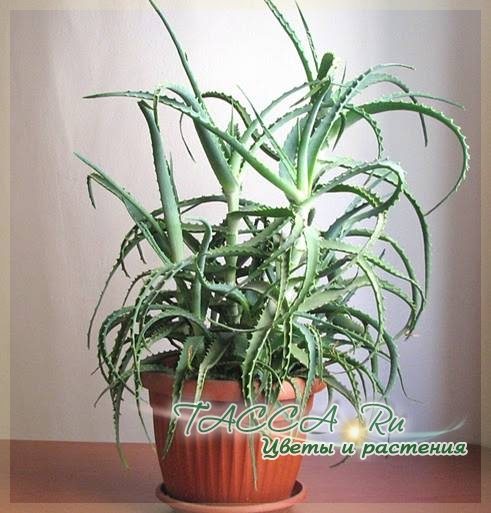

External signs. Root decay causes a long delay in the growth of aloe (especially during the growing season), drying out of the stem, and lack of response to watering.
Control measures. If root decay is only partially removed, all affected parts of the roots are removed, and the rest are well sprinkled with coal powder or sulfur, and aloe is planted in fresh soil with a large proportion of sand. After three weeks, watered very carefully. If the roots are completely rotten, you can save the top of the stem by rooting it like a cutting. At the same time, part of the stem is cut off so that only healthy strong tissues remain.
If the plant is completely damaged, it is thrown away with the pot, as the fungus can persist in the soil for many years.
Dry rot... The disease occurs when the plants are not maintained correctly.
External signs. Outwardly, it does not appear for a long time, while rot is not observed. The plant seems to dry out, without noticeably changing color and shape, but it turns out to be completely dry inside. And all this happens so quickly that the period of "partial defeat" is usually not noticed.
Control measures. Since this disease is transient and methods of dealing with it have not yet been invented, the plant dies. However, disease can be prevented by periodically prophylactic spraying with a systemic fungicide.
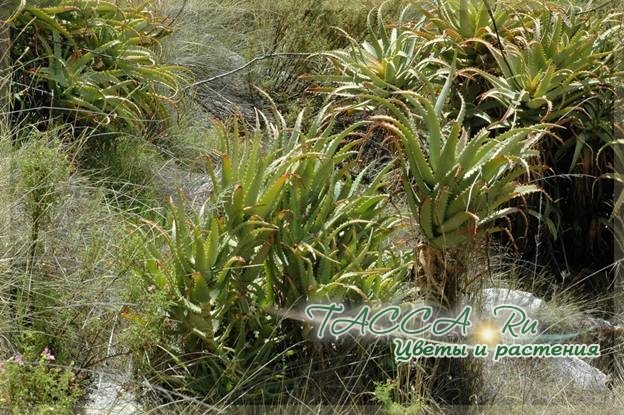

Other causes of damage. Most often, aloe suffers from excess moisture. If watering is too frequent, the roots rot and the plant dies. Aloe also often suffers from a lack of sunlight, especially in winter. At the same time, its stems are stretched, the leaves become smaller and sit on the trunk less often.
Doesn't benefit aloe and planting in heavy clay soil. In it moisture evaporates poorly and there is no aeration.
Views.
Aloe ferox - Awesome Aloe - vigorous plant with a single erect stem reaching 3 m in height. In its apical part, a large rosette develops, consisting of 50-60 lanceolate leaves, up to 1 m long and about 15 cm wide. The bright green surface of the leaves under conditions of physiological stress can acquire a reddish tint. Along the edges, and sometimes on both surfaces of the leaf, there are brown-red thorns about 6 mm long, from which the plant got its name (the specific name translates as "terrible"). At the end of spring, a bright racemose inflorescence develops from the center of the rosette, usually branched, consisting of 5-12 brushes up to 50-80 cm high. The flowers are tubular, usually bright red-orange, but there are forms with yellow or whitish flowers. Due to the peculiar arrangement of the brushes, this type was once called Aloe candelabrum. It grows in Lesotho and the arid regions of South Africa (Cape Province, KwaZulu-Natal). In South Africa, the leaves of this plant are harvested as medical and cosmetic raw materials.
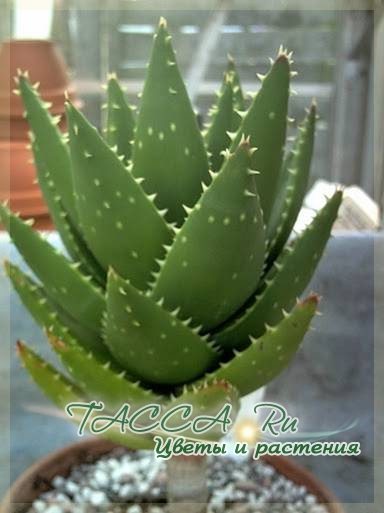

Aloe plicatilis - Fan aloe or folded - vigorous plant, bushy or treelike, with a woody stem, usually highly branched, reaching 3-5 m in height. The stem branches out dichotomously, and a large rosette develops at the apex of each branch, consisting of 12-13 ribbon-like opposite leaves arranged in a fan-like manner. Leaves are grayish-green in color, rounded-linear, 25-30 cm long and about 4 cm wide. The edges of the leaves are smooth or slightly serrated at the very end. From the center of the leaf rosette, an erect bushy inflorescence appears 50 cm high, usually not branched, represented by one cylindrical brush, 15-25 cm long, with 25-30 scarlet flowers. Due to the special arrangement of the leaves, this species is called fan-shaped. It grows in rocky areas in the southwestern Cape of South Africa. That plant is one of the few aloe species that need abundant watering, especially in summer, as it comes from places where there is a lot of rainfall.
Aloe variegata- Variegated aloe - a powerful bushy plant without a stem, 25-30 cm high, but with stolons forming dense groups of rosettes of elongated leaves. The leaves, arranged tightly tiled spirally in 3 rows, have a length of 10-15 cm and a width of 4-6 cm. The dark, brownish-green surface of the leaves is covered with a characteristic white spotted and striped pattern, which is why the plant got its name - “multi-colored ". The leaves are slightly bent back, they are lanceolate-deltoid and have a V-shape in cross section; the edges of the leaf plate are whitish, rounded toothed and slightly horny, 12 cm long, 4-6 cm wide. In summer, from 2 to 6 erect racemose inflorescences emerge from the leaf rosette, usually single or slightly branched, 25-30 cm high.They look like rare cylindrical brushes 10-20 cm long, consisting of 20-30 tubular, slightly hanging flowers of variable color - from pink to fiery red or, less commonly, yellow. Without flowers, plants of this species can be confused with representatives of the genus Gasteria. It grows in the arid zones of the Cape Province in South Africa. Grows in semi-desert areas on plains with heavy soils, less often on rocks and sandy soils. One of the most decorative types. The soil for variegated aloe should be more fertile than for other species.
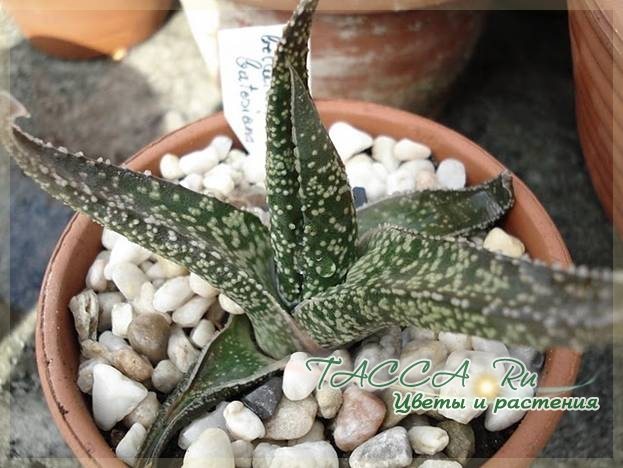

Aloe barbadensis Mill, (synonym A. vera L.) — Aloe Barbados - perennial stemless herbaceous bushy plant with many lateral shoots and a strongly shortened stem, which forms dense groups of compact rosettes of leaves. Leaves are lanceolate, slightly corrugated, up to 50 cm long, 6-7 cm wide with tiny thorns along the edges, grayish-green, sometimes with white spots.The edges of the leaves are sharp-toothed, with a more or less pronounced pinkish tinge. At the beginning of summer, an inflorescence up to 90 cm high will grow from the center of the leaf rosette, usually branched, consisting of 2-4 brushes of tubular flowers, 3 cm long, of various shades of yellow. Some local or artificially bred forms have bright red flowers. The place of origin of this plant is unknown, since since ancient times it was grown primarily for its medicinal properties, but it is still generally accepted that this type of aloe comes from the Canary Islands and the Cape Verde Islands. It later spread to many temperate areas. It is widely cultivated as a houseplant under the name "agave". In Europe, this plant has been grown as an indoor plant for 300 years.
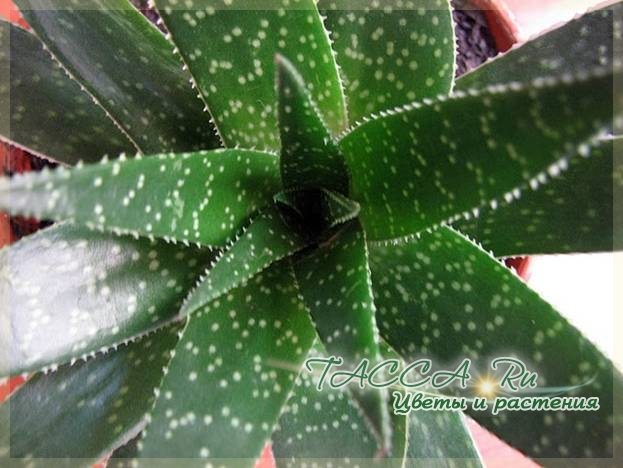

Aloe marlothii Berger - Aloe Marlota - tree-like unbranched plant; in nature up to 4 m high. The top of the plant is decorated with thick fleshy broad-lanceolate leaves up to 1.5 m long, 20-25 cm wide. The edges and both surfaces of the leaf are seated with thorns. Peduncle, up to 80 cm high, bears numerous orange flowers. Flowers 3-3.5 cm long. Homeland - South Africa, where Marlota aloe grows on rocky soils at an altitude of about 1120 m above sea level and often forms real forests. Especially decorative at the age of 2-5 years. They rarely watered (with drying of the earthen coma), not only in winter, but also in summer.
Aloe humilis - Aloe squat - perennial herb of small size, forming dense groups due to abundant branching. The rosette consists of linear-lanceolate, gray-green or bluish-green leaves, 10 cm long and 1.5 cm wide, with white teeth along the edge and with numerous white papillae on the surface. Flowers are red or orange, 3 cm long; peduncle 25-35 cm high. Suitable for creating succulent gardens. Homeland - South Africa. The species is variable in nature, there are a number of varieties and natural hybrids. The culture is unpretentious.
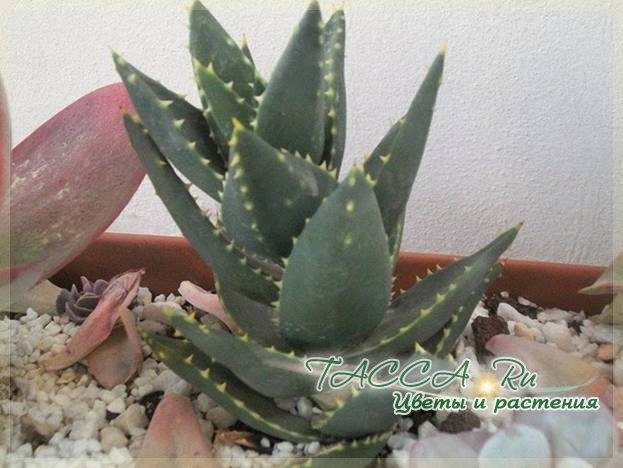

Aloe dichotoma Masson - Aloe dichotomous - a tree-like plant 6-9 m in height with a thick trunk up to 1 m in diameter and an abundant crown. The leaves of the dichotomous aloe are linear-lanceolate, 25-35 cm long, 5-6 cm wide, bluish-green, with tiny thorns at the edges. Peduncle more than 30 cm in height, flowers 3-3.5 cm in length, light canary yellow. Homeland - South and Southwest Africa - rocky hot deserts, where it lives in places almost completely devoid of vegetation. They are kept very dry not only in winter but also in summer. Aloe dichotomous grows very slowly.
Aloe ramosissima - aloe multi-branched - This species is often confused with A. Dichotoma, but Aloe ramosissima is a smaller, coastal plant. The inflorescences of yellow flowers are almost the same, but the plants branch more intensively and reach a height of only 2 m. The leaves are narrower and shorter than in A. Dichotoma. This species can grow outdoors at relatively low temperatures and needs to be moved indoors only in late autumn. The plant does not tolerate severe frosts and prefers some shading during the hottest part of the day. Usually propagated by seeds, sometimes by cuttings. Homeland: South Africa.
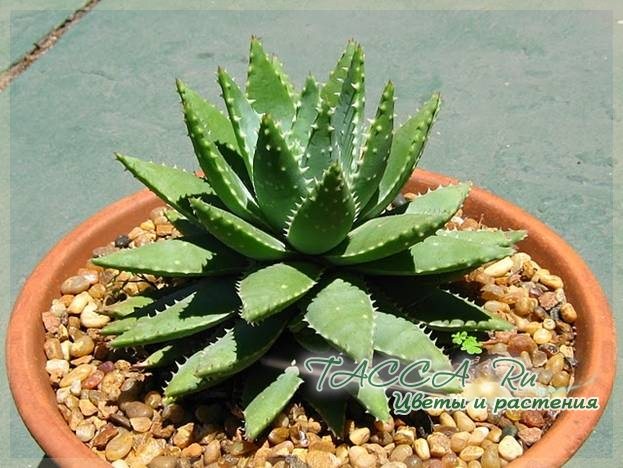

Aloe arborescens Mill - Aloe tree - bushy or tree-like abundant branching plant 2-4 m in height. Leaves up to 60 cm long, 5-7 cm wide, juicy, xiphoid, with denticles along the edges. Peduncle about 80 cm in height, flowers 4 cm in length, in dense tapered racemes. The color of the flowers ranges from fiery red to pink or yellow-orange. The fruit is a 3-nested dry capsule with black-brown, laterally compressed and winged seeds. It is widely distributed in southern and tropical Africa in thickets of bushes, along river banks, on mountain slopes at an altitude of up to 1800 m above sea level. One of the most popular indoor plants, called the agave. It is associated with the ingrained opinion that aloe blooms once every hundred years.Old specimens of the agave bloom beautifully in greenhouses in December - January, and there are also frequent cases of its flowering in rooms.
Medicinal. Known in Europe since 1700
Aloe mutabilis Pillans - Aloe mutable - outwardly very similar to the previous type, but has a smaller size, also differs in two-color brushes.
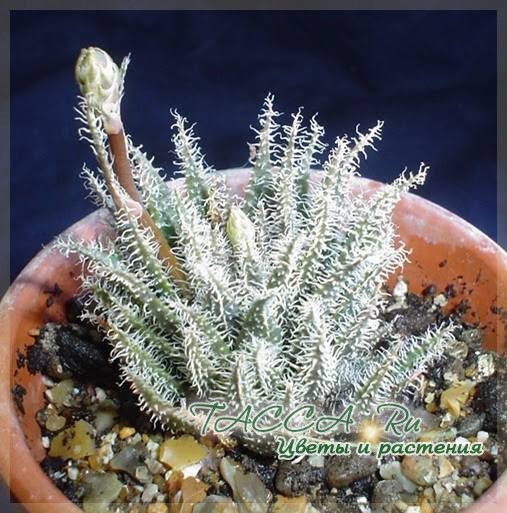

Aloe mitriformis Mill - Aloe cap-shaped - a perennial herb with creeping stems 1-2 m in length.
The leaves of the cap-shaped aloe are ovate-lanceolate, juicy, bluish-gray or green, about 20 cm long, 10-15 cm wide, on the underside with a small keel, on which there are 4-6 spines, leaf margins with white or yellow teeth.
Peduncle cap-shaped aloe 40-60 cm tall, flowers 4-4.5 cm long, dark scarlet. The homeland of the cap-shaped aloe is South Africa, where aloe grows in arid regions with winter precipitation, on rocky soils, on granite rocks at an altitude of 1300 m above sea level. The rosette of leaves can reach a diameter of 70 cm in nature. The species is variable, there are several varieties.
In culture, as the stem lodges, the cap-shaped aloe loses its decorative effect. In this case, the upper part of the aloe shoot must be cut off and re-rooted.
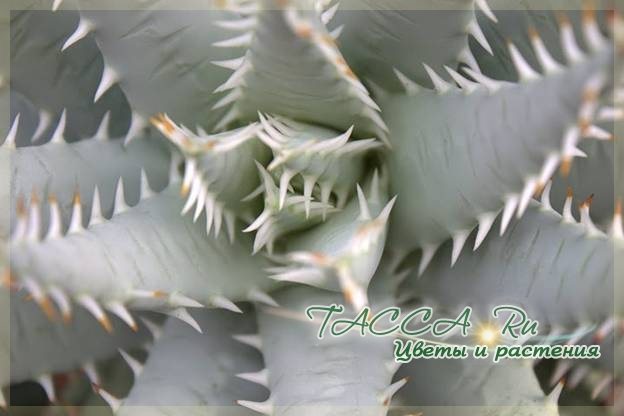

Aloe bellatula Reynolds - Aloe is pretty - a perennial herb with a basal rosette of narrow dark green leaves 10-13 cm long, 9-10 mm wide, both surfaces of which have small warts, which gives them roughness, and small white spots. The edges of the leaf have tiny thorns. Peduncle up to 60 cm in height, unbranched (rarely 1-2 branches), with beautiful bell-shaped flowers of coral color, 13 mm long. Homeland - Central Madagascar. This species was discovered relatively recently - in 1949 by Professor D. Millot, and then described by Dr. J. Reynolde in 1956.
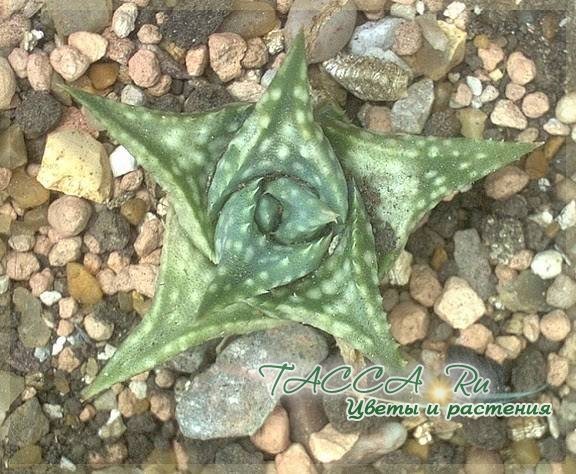

Aloe saponaria (Ait.) Haw - Aloe soap - perennial stemless or short-stemmed (up to 50 cm in height) herb that gives numerous shoots. Leaves 25-30 cm long, 8-12 cm wide, lanceolate, dark green with white spots, merging into indistinct rows. Edges with brown spines. Peduncle 40-60 cm in height, flowers 3-3.5 cm in length, bright pink. Homeland - South Africa. One of the most widespread and variable species in nature. It grows both in moist coastal areas on clay soils and in dry inland areas on rocky slopes up to 2000 m above sea level. The flowers, depending on the varieties, can be yellow, salmon pink, red or orange. There are natural hybrids. In culture in Europe since the beginning of the XVIII century. Medicinal plant.
Aloe distans Haw. (synonym for A. brevifolia Haw.) - Aloe spaced - a perennial herb (Fig. 10). The stem is erect at first, then bends and spreads along the ground, giving numerous shoots and reaching 2-3 m in length. Leaves broadly ovate, 8-9 cm long, 5-6 cm wide, bluish-green, with yellowish thorns 3-4 mm long at the edges. Flowers up to 4 cm long, dark scarlet. Homeland - Southwest Africa.
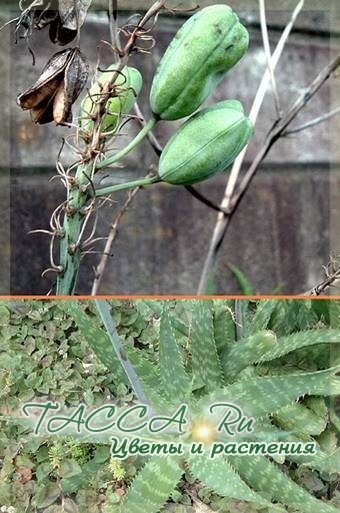

In culture, as the stem lodges, its decorative effect is lost. In this case, the upper part of the shoot must be cut off and re-rooted.
It grows in the Cape province, in the savannas, on rocky soils.
Aloe haworthioides Baker - Aloe havortia - perennial herbaceous stemless plant. The leaves of the havortia-like aloe are numerous (up to 100), 3-4 cm long and about 6 mm wide, gray-green with white papillae, collected in a dense basal rosette with a diameter of 4-5 cm; leaf edges with white spines and hairs.
Peduncle 20-30 cm in height, flowers are white or light pink, 6-8 mm in length. The homeland of the haworthy aloe is Central Madagascar, where it lives in the mountains at an altitude of 1200-1800 meters above sea level.
Aloe melanacantha Berger - Aloe black thorn - perennial stemless herb. In old age, it can reach 50 cm in height.The leaves are deltoid-lanceolate, up to 20 cm long, 4 cm wide, dark green. The reverse side has a keel, on which there are thorns, lighter at the base of the leaf and almost black at its apex. Peduncle up to 1 m in height, flowers 4-5 cm long, scarlet-red.
The homeland of the black spiny aloe is South Africa. It is watered moderately in summer, rarely in winter, with prolonged drying of the earthen coma.
Aloe descoingsii Reynolds - Aloe descoings - this herb with a shortened stem grows over time. Its leaves are collected in basal rosettes, elongated triangular, up to 4 cm in length, and at the base 1-1.5 cm.The color of the leaves is from light green to dark green and even brown, with white spots on the surface of the leaf and white waxy tubercles, the edge of the leaf is serrated.
Peduncle reaches 25 cm in height, racemose simple, tubular flowers up to 8 mm, orange. Homeland: Madagascar.
Aloe jacksonii Reyn - Aloe Jackson - this perennial bushy plant has a short stem up to 25 cm tall. The leaves of Jackson's aloe are linear, up to 10 cm long, light green, with white spots on the surface, covered with a waxy bloom, with a serrated edge, the teeth are small, waxy, at the end one 2 mm thorn.
The peduncle of Jackson's aloe is up to 25 cm long racemose and simple, tubular flowers, up to 3 cm long, red. The homeland of Jackson's aloe is Ethiopia and Somalia, where it is ubiquitous.
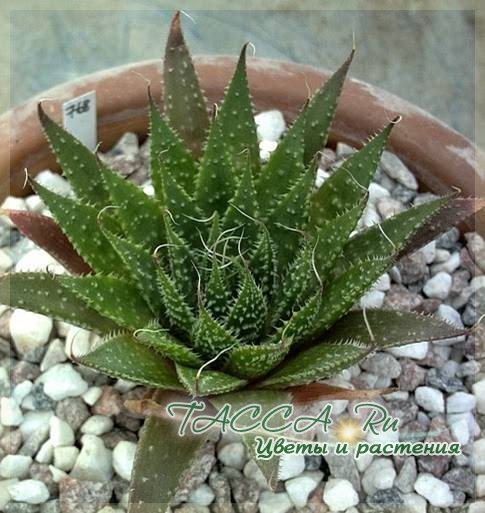

Aloe albiflora Guillaumin - White-flowered aloe is a bushy stemless plant that forms basal rosettes. White-flowered aloe has linear-lanceolate leaves, up to 25 cm long and 3-5 cm wide, narrow, gray-green, covered with white specks on both sides, edges with whitish teeth.
Peduncle of white-flowered aloe up to 50-70 cm long, slightly branched, racemose, flowers from 10 to 25, tubular, white. A very beautiful and delicate type of aloe with very touching flowers. Homeland: Madagascar. A rare plant in culture.
Aloe aristata - Spinous aloe - an amazing plant that once made Cleopatra so attractive and seductive. The plant has conquered Europe for a long time. When buying a plant, keep in mind that its minimum height is 30 cm, and the leaves are tough and elastic. At first glance, this is not the most beautiful indoor flower, but aloe has healing properties that make it just a necessary plant from the "green first aid kit".
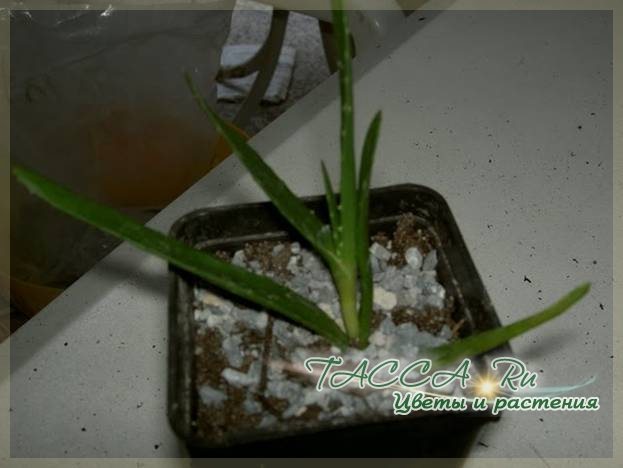

It is a bushy plant with strongly shortened stems, often forming groups of rosettes (up to 12), compact, 10-15 cm in diameter, arcuate. Leaves are numerous (100-150 pcs.), Narrow-linear, 8-10 cm long and 1-1.5 cm wide, gray-green with white dots. The edges of the leaf have small white thorns, the end has a long white awn. The dark green surface of the leaves is covered with white tubercles, along the edges there are cartilaginous denticles 1-2 mm long. At the end of spring, a racemose inflorescence 50-70 cm high grows from the center of the rosette, usually branched, with 2-6 racemes 15-20 cm long, tubular red-orange flowers. In its natural environment, the plant blooms in November. Without flowers, rosettes of leaves are very similar to plants of the genus Haworthia. A compact plant, often cultivated in rooms. It is watered abundantly in summer and moderately in winter. With prolonged overdrying of the earthen coma, the roots die off, and the leaves lose their turgor.
It grows in Lesotho and the Eastern regions of South Africa (Cape Province, KwaZulu-Natal).
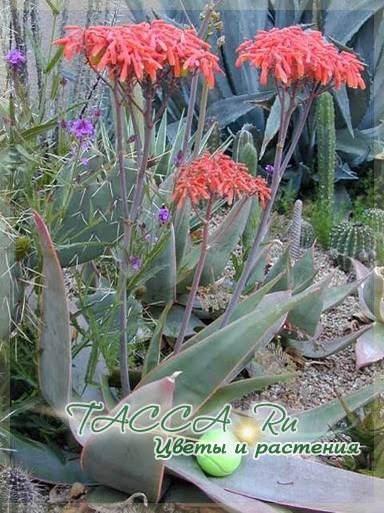

Aloe camperi Schweinf- Aloe camperi (synonym: A. era - A. eruA. Berger) - it is a perennial herb with a short stem, up to 60 cm tall, has leaves collected in a rosette up to 60 cm long, at the base up to 7 cm wide, elongated-lanceolate, fleshy, arcuate-curved, green, glossy, and prickly along the edge.
Peduncle up to 1 meter tall, racemose, branched. Flowers are yellow or orange-red, tubular, up to 4 cm long. It grows in Ethiopia.
Aloe striata Haw - Scarlet gray or striped - perennial stemless plant. Leaves are fleshy, collected in a dense rosette (from 15 to 20), up to 50 cm long and 10-15 cm wide, grayish-green, with longitudinal stripes, and reddish-brown spots, whole-edge, waxy-reddish along the edge of the leaf. Peduncle 60-90 cm long, branched, with 20 or shorter racemes. Flowers 2-2.5 cm long, slightly swollen at the base, reddish. Blooms in April and May. Grows on rocky soils on the slopes of the mountains in the Cape Province (South Africa).
Advice. If aloe leaves turn red, then it is lacking in nutrients or moisture.
Top best express recipes with aloe
For oncology of any origin, before radiation sessions:
- take 1 part of linden honey and 5 parts of agave juice, mix until smooth;
- the agent lubricates the desired area of the skin;
- the received medicine is stored at a temperature of 4 to 7 ° C for no more than five days.
For acute and chronic hemorrhoids:
- the pulp of the leaf of the agave without the skin is pounded with honey and cow's oil until a plastic mass is obtained;
- form candles from the resulting mixture and put them in the freezer for an hour;
- insert suppositories into the rectum twice a day.
When hemorrhoidal cones fall out, cakes are formed from a thick mixture and applied in the form of a compress.
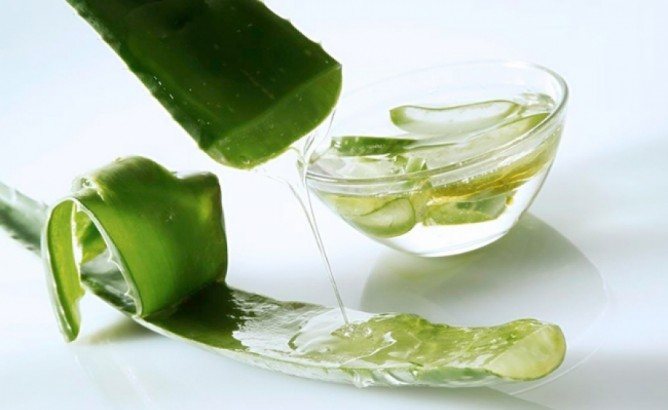

Aloe in ophthalmology
The use of aloe tree for the eyes is due to its antibacterial and healing properties, as well as its high moisturizing and nourishing effect. The extract is successfully used for such pathologies as:
- cataract;
- redness of the eyes caused by weak blood vessels;
- swelling of the eyelids;
- cloudy lens;
- conjunctivitis;
- an allergic reaction to pollen or dust.
For the preparation of medicinal compositions, only the lower leaves of a three-year-old plant are used, which are kept in the refrigerator for two weeks and only then juice is extracted from them. It is impossible to instill a pure concentrate in the eyes, otherwise there is a risk of getting a mucous membrane burn.
The simplest recipe with a tree-like aloe for the eyes is to dilute the squeezed and strained juice with boiled or purified water at the rate of 5 ml of juice per 50 ml of water. It can be used up to three times a day, dripping 1-2 drops into each eye.
In case of cataract disease, the action of aloe juice enhances the mummy. To prepare the composition, 3 g of a resinous substance is dissolved in 80 ml of freshly extracted agave juice, the whole mixture is diluted with boiled water to obtain 700 ml of liquid. It is necessary to instill the medicine in the eyes for a month, 3 times a day.
Dries up - how to protect?
The main reasons why aloe disappears and dries up is improper care, pest damage or disease. What should be done:
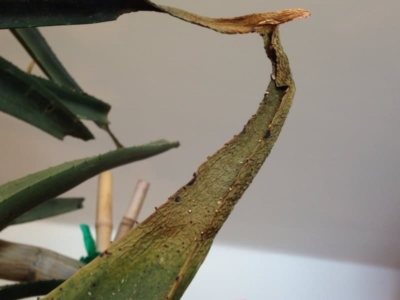

- Examine the agave for disease or parasites. These plants have twisted leaves that show brown spots, ulcers, cobwebs, etc.
- If parasites are found, aloe is treated with insecticides, according to the instructions on the package.
- If the flower is sick, then you should find out the cause of the disease and take advisory measures.
- If no pests or signs of disease are found, then it is recommended to transplant the agave into a larger pot, replacing the ground with a special composition for succulents and cacti.
Harvesting aloe
To activate the beneficial properties of all the elements that make up the plant, cut, washed in cold water and dried leaves of the agave must be kept at a temperature of 4-6 ° C for about ten days. For this, the leaves of the tree-like aloe are laid in separate bags or wrapped in a transparent film and put into the vegetable compartment of the refrigerator.
Since the gel substance contained in the leaves is a highly concentrated and quickly perishable product, it is not recommended to harvest more of it than can be consumed in 3 days. Therefore, it is better to use not the whole sheet, but part of it, after which the remainder is again wrapped in film and put into the refrigerator.
The required amount of aloe pulp is crushed and the gel is squeezed out of it, which is immediately poured into a pharmacy bottle made of brown glass. Fresh liquid has a shelf life of 72 hours.
If you want to increase the shelf life of the juice, then dilute it 1: 1 with ethyl alcohol before pouring it into the bottle. Then the composition is mixed well and put into the refrigerator door. Aloe alcoholic lotion of tree-like properties lasts 10-12 months.
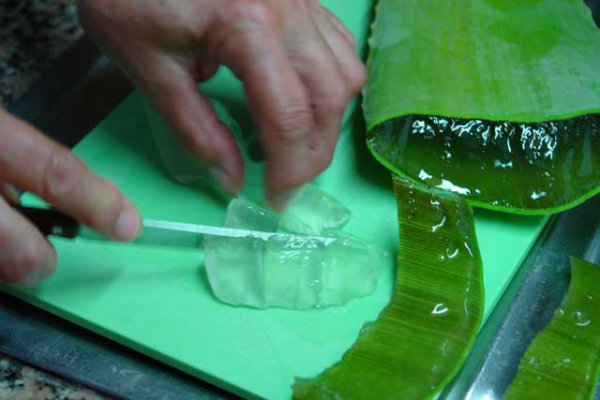

Recipes
There are a lot of recipes. Let's consider the most popular ones.
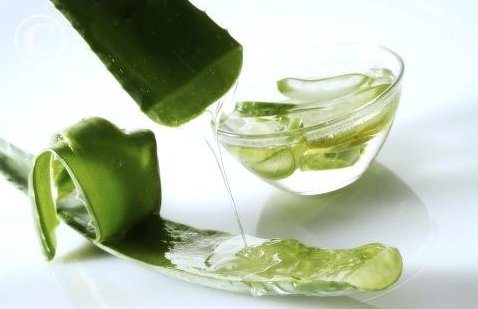

For hair strengthening and growth, in case of hair loss
- Hair loss. Rub a mixture of a tablespoon of juice, a teaspoon of honey and olive oil into your skin. Wrap for 30 minutes. Shampoo your hair. Repeat once a week. The exposure period is three months.
- Enhanced hair growth. Mix one tablespoon of agave juice with a teaspoon of honey and the same portion of mustard powder. Add the yolk of the egg. Rub the thoroughly whipped mixture into the roots. Leave for half an hour. Remove residues with warm running water.
For hair beauty
- Dandruff. Prepare a mixture of two tablespoons of aloe tree juice and a teaspoon of lemon juice, castor oil, honey. Heat in a water bath to a pleasant temperature. Apply to roots and keep for half an hour. Wash off.
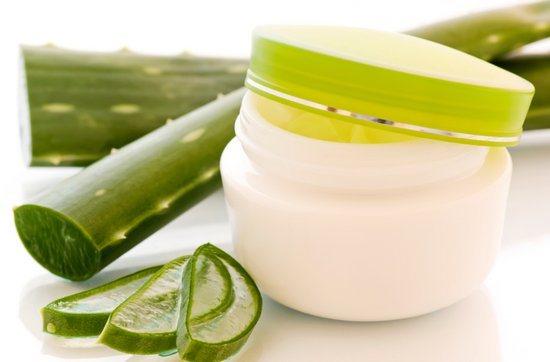

For facial beauty
- Tired skin and wrinkles. Grind two leaves of aloe and cover with water for a day. Strain, pour into molds and place in the freezer. Use to moisturize.
- Acne. Wet a gauze napkin with fresh agave juice. Leave the mask on for 30 minutes. Wash off. Do it every day, then every other day, then twice a week. 25 masks are enough for a course of medical procedures.
Also used as face masks are: prickly pear oil, sweet honey, rose, fresh cucumbers, bee bread, red mountain ash, gravilat, melon, curly lily, viburnum.
For the treatment of tuberculosis and pneumonia
- Beat honey, cocoa, butter (take 100 g of each ingredient). Add 15 g of agave juice. Drink one tablespoon three times a day.
- Insist a tablespoon of birch buds in a glass of juice, a glass of honey, a glass of Cahors for 9 days. Drink a tablespoon three times a day.
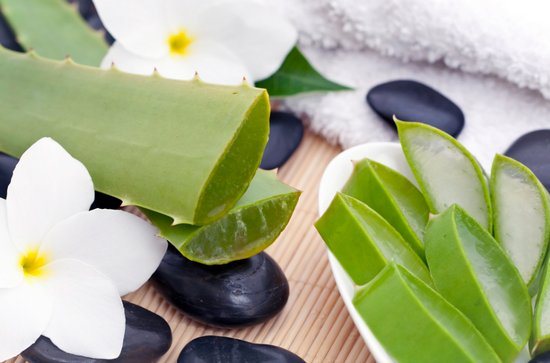

For the treatment of sore throats, bronchitis and colds
- Bronchitis. Mix melted honey and butter with juice. Measure the food with one spoon in equal amounts. Give two teaspoons before meals four times a day. The course is 5 days. Stop taking. Resume the next course in five days.
- Angina. The juice is diluted with water 1: 1 and used for rinsing the throat and mouth.
- Respiratory infections. Drink a teaspoon of fresh juice before meals (20 minutes in advance) three times a day.
For skin diseases
For various injuries and diseases of the skin (purulent wounds, trophic ulcers, burns, eczema, etc.), compresses based on the juice of a tree plant are used. There are recipes where another component is present - oil.
Canuper grass, maple juice, St. John's wort, anise lofant, stonecrop, rutabaga, northern bedstraw, white willow, hazelnuts, Veronica officinalis, pine nuts, burdock root contribute to the healing of wounds and burns.
With furunculosis, a fabric is moistened with a composition of olive oil and juice in equal parts. Apply to the boil and leave for a day. Change for a fresh lotion. Do until the pain and inflammation disappear.
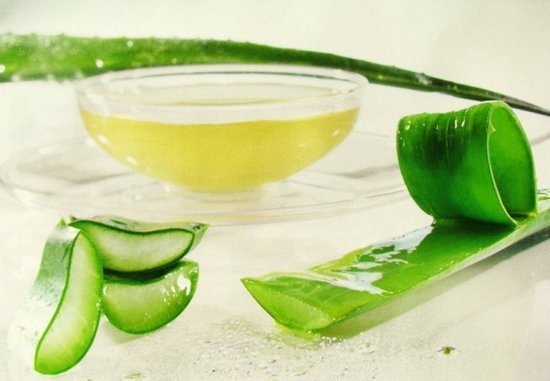

With eye diseases
Pulp without skin and sharp teeth is poured with hot water 1: 5. The eyes are cleaned with the resulting solution at room temperature, a wet napkin is placed over the eyes.
For diseases of the oral cavity
Rinse the mouth with a mixture of water and juice in equal amounts.
Diseases of the genitourinary sphere
- Urinary tract infections. Dilute a mixture of a tablespoon of aloe and turmeric juice (on the tip of a knife) with a liter of boiled water in a warm state. Douch your vagina as often as possible. The healing period is from two to four weeks.
- Fibroma of the uterus. In a water bath, evaporate 200 g of finely chopped leaves, one chestnut fruit, three glasses of red grape wine (30 minutes). Strain. Give a tablespoon three times a day half an hour before meals.
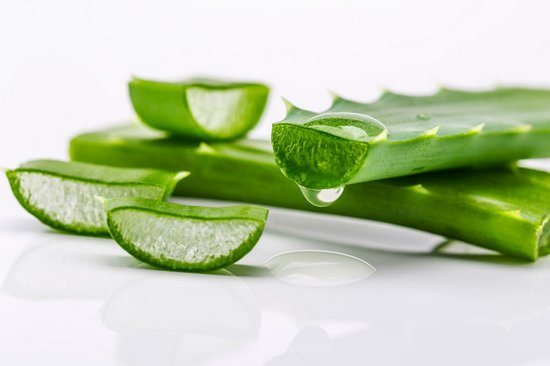

- Swelling of the uterus. Mix the same parts of aloe juice, corn oil, black radish juice well. Pour in 70% alcohol (for half a liter of a mixture of 50 ml of alcohol). Insist a week in a dark place. Give 20 minutes before meals. Take a tablespoon three times a day.
Other plants, such as lungwort, lakonos, savory, white cinquefoil, marsh rosemary, peppermint, anise, and bastard, also have medicinal properties.
Diseases of the stomach and intestines
- Ulcerative colitis. Drink the juice twice a day, 25-50 ml.
- Gastritis. Drink a teaspoon of juice half an hour before meals. The appointment is for two months.
- Colitis and constipation. Give a teaspoon of juice before meals.
- Stomach ulcer. Put a mixture of half a glass of chopped agave leaves and honey (3/4 cup) in the dark for three days. After the time has elapsed, pour in a glass of Cahors. Filter in a day. Take a tablespoon three times daily before meals.
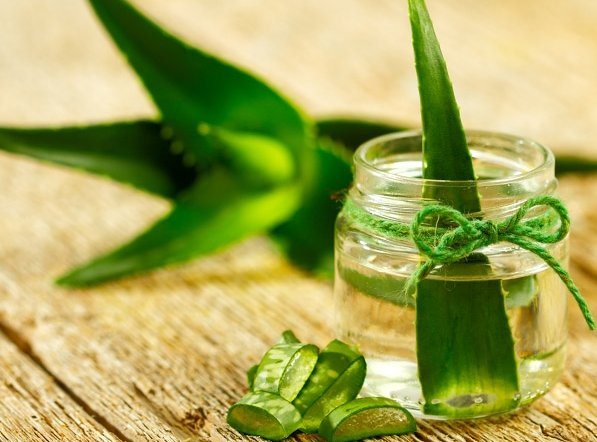

Diseases of the cardiovascular system
- Hypertension. Dilute a teaspoon of water with three drops of fresh juice. Give the patient on an empty stomach for two months in a row.
- Stroke. Mix aloe juice (3/4 cup) with 5 g of mummy. In the early morning and late evening, drink a teaspoon for two weeks. Interrupt the course of treatment. The next two weeks, take propolis tincture three times a day, half an hour before meals, 30 drops. Continue the course of treatment with aloe and mummy juice again for two weeks. The alternation lasts no more than two months.
In addition to tree aloe, white cinquefoil, hellebore, mountain arnica, oregano (oregano), chervil, rockambol, loch, hops, oxalis and buttercups also have a positive effect on the state of the cardiovascular system.
Scalp remedy
Mask that revitalizes the scalp and stimulates bulbous activity:
- 0.5 tbsp. tablespoons of dry mustard;
- 1 tbsp. spoon - chopped aloe pulp, onion juice and liquid honey;
- 2 egg yolks;
- ampoule of vitamin B6.
All the other ingredients are added to the honey heated to 30 ° C, and at the very end mustard diluted with water to a pasty state. The mixture is intensively rubbed into the scalp and applied to the entire surface of the hair. The head is insulated with a cellophane cap and a towel. It is recommended to keep the mask on the hair for half an hour, then rinse thoroughly in a large volume of water.
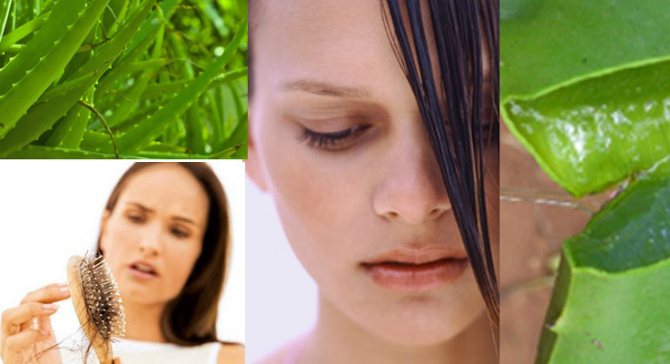

What types of aloe are used in medicine
Aloe is a genus of succulent plants, which includes about 500 species. Of these, less than a dozen are used for medical purposes.
For the production of medicines, the leaves of the following types of aloe are used:
- Faith, or Present;
- Tree-like, or agave;
- Intimidating;
- Striped;
- Soapy.
In our region, the most common aloe tree, or agave. Its chemical composition and the effect of juice on the human body are well studied. In most cases, when they talk about the benefits of aloe, they mean the medicinal properties of the agave.
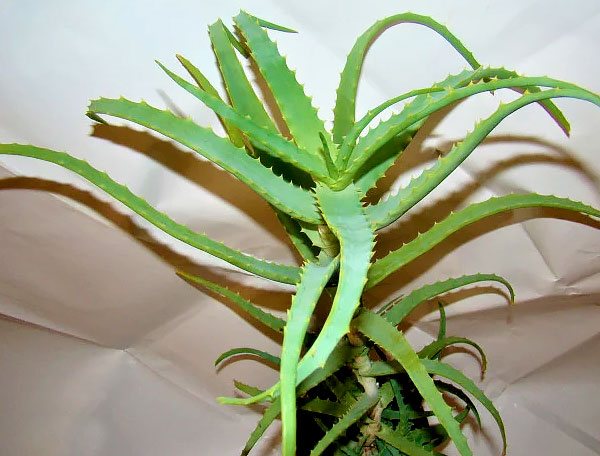

View of an adult, but relatively young tree aloe bush.
Aloe vera is also widely used in pharmacy and cosmetology. Outwardly, this succulent is very different from the tree. It has a shortened stem and large fleshy leaves that are easy to squeeze out of. It is also famous for its exotic yellow flowers. During flowering, a succulent looks like this:
Despite the apparent differences, the properties of aloe vera and tree vera are similar. In medicine, they are used in the same cases.
Striped aloe has similar healing effects. It is used much less often, since the chemical composition of the succulent is less studied.
In places of growth, aloe is also used soapy and frightening. The latter is grown on an industrial scale and used for the preparation of medicines.Aloe intimidating can grow up to 3-5 meters in height, and the length of its leaves, as a rule, reaches 1 meter. Thanks to this size, it is easy to extract medicinal raw materials from the leaves of the plant.
The photo shows aloe intimidating:
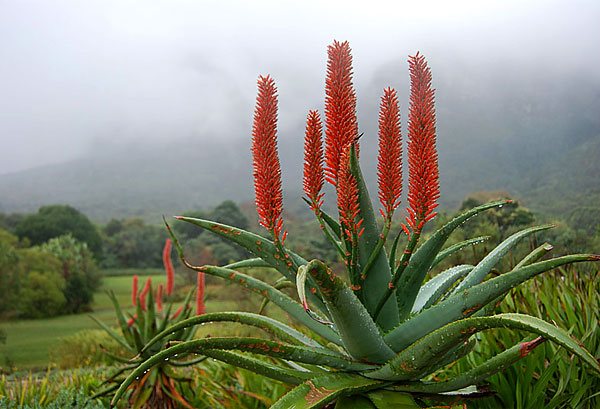

Chemical composition
Aloe tree leaves contain biologically active compounds, enzyme groups, a unique essential oil and several types of acids, including succinic, a powerful stabilizer of cellular respiration. Four types of B vitamins, ascorbic acid, carotene (vitamin A) and tocopherol (vitamin E), are considered a "beauty complex" and are contained in the pulp of the leaves in sufficient quantities so as not to look for these substances in other sources.
Separately, it is necessary to say about the micro- and macroelements of the valuable substance - there are more than twenty of them in the tree-like aloe. Among the most important are:
- sodium;
- potassium;
- calcium;
- manganese;
- zinc;
- iron;
- copper.
An interesting fact - in the fresh juice of the tree-like aloe contains exactly the same amount of mineral salts as in a similar volume of human serum plasma.

